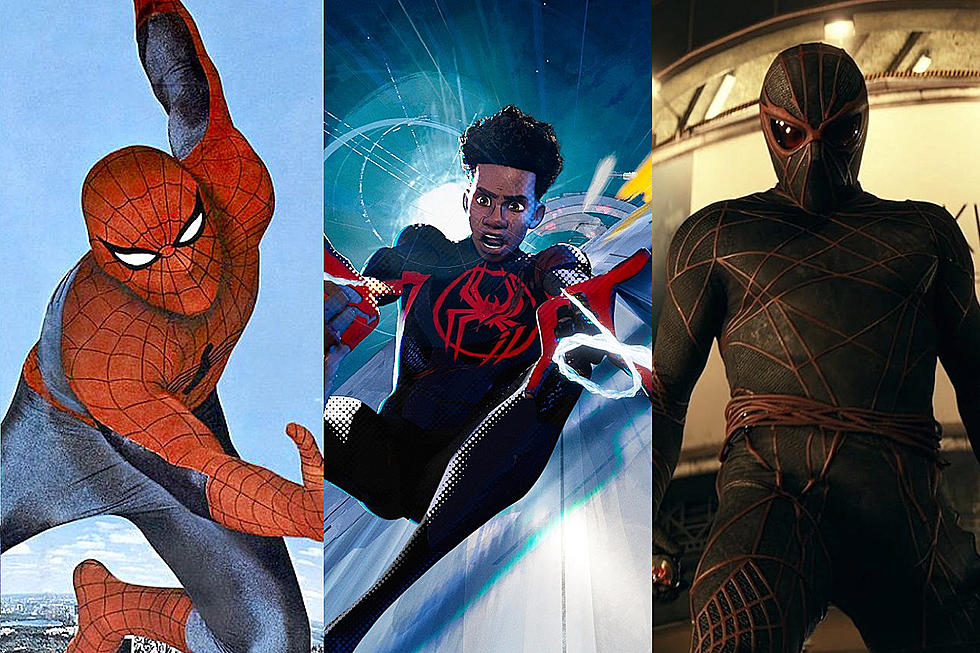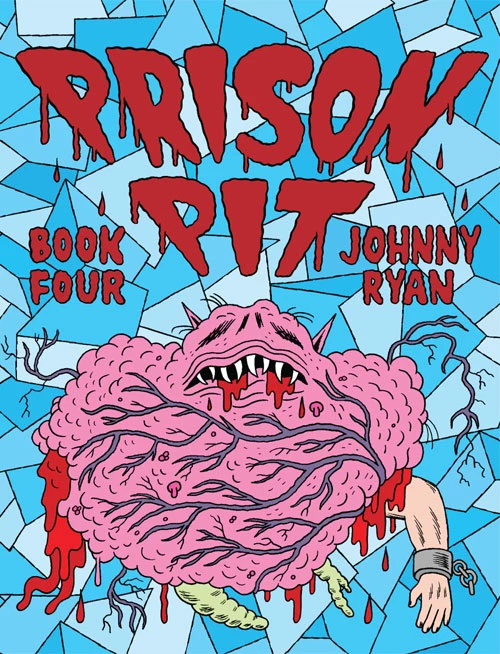![Comics Alliance Presents the Best Comics of 2012 [Master List]](http://townsquare.media/site/622/files/2013/01/06compiled.jpg?w=980&q=75)
Comics Alliance Presents the Best Comics of 2012 [Master List]

LITERALLY THE HEAVYWEIGHT LITERARY COMICS OPUS OF THE YEAR

Building Stories
By Chris Ware
Published by Pantheon
Available: Random House store / Comics shops
How best to describe the format of Chris Ware's extraordinary non-linear biography of a building and dissection of a life? It's not a book, nor even a collection of books. It's a box. A big, hard, heavy, six-pound box containing comics, pamphlets, folded strips, hardcovers, broadsheets, and even a back-boarded fold out that resembles a game board.
When I first laid out the contents of Building Stories in front of me I realized what it most reminded me of was the haul one brings back from a small press comic convention -- and it conjured all the excitement and wonder attendant to that experience. If only Ware had packaged Building Stories in a threadbare messenger bag decorated with handmade buttons, the comparison would have been complete.
Of course, a small press haul is usually a collection of many voices, many worlds. Building Stories is all Ware, in all his exacting rigidity and diagrammatic glory. Diversity of style gives way to a jeweler's precision, and the result is a world unpacked by a Masonic god. Ware can take us into private lives, behind doors, into thoughts, into the very lives and afterlives of insects, and at any scale the focus is the same. Readers are invited to unpack this orienteering map of a small universe either in orderly style or as an experience to dip in and out of. There are parts of the book that can be enjoyed curled up on the sofa with a hot drink, but one might as plausibly lay the parts out on the floor like a disassembled machine and try to understand how they fit together.
It's almost a quarter century since Will Eisner introduced us to his New York tenement tales, and by some standards invented the graphic novel. Chris Ware's Chicago brownstone serves as a worthy neighbor, and by some standards a reinvention of the form.
BEST APOCALYPSE OF 2012
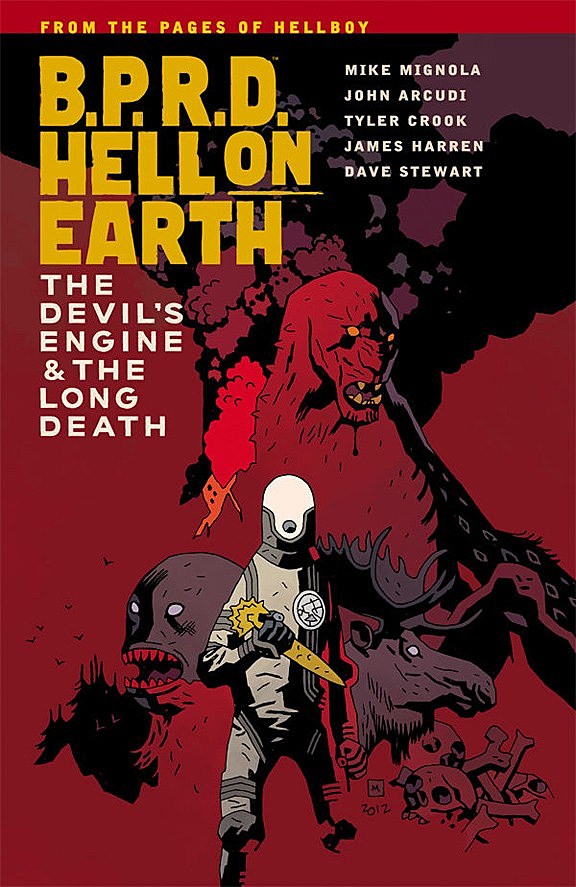 B.P.R.D. Hell on Earth
B.P.R.D. Hell on Earth
Written by Mike Mignola and John Arcudi
Artwork by Tyler Crook, James Harren, Dave Stewart
Published by Dark Horse Comics
Available: Dark Horse/TFAW store (print) Comics shops (print) / Dark Horse Digital
It is difficult to explain exactly why B.P.R.D. has consistently been one of the best ongoing comic book serials since it began in earnest in 2005. That's not because this is one of those intensely idiosyncratic, genre-mashing series that's so bizarre as to defy description, but because the saga of the Bureau for Paranormal Research and Defense is simply so damn good, so endlessly riveting and so impeccably plotted, designed and illustrated that to share a seemingly innocent moment risks tipping over any number of spoiler-cast story dominos. As a dedicated fan of this massive work, I couldn't live with myself if I injured a new reader's enjoyment even a little. If you are a new reader, here's a helpful guide to the books and in what order you should read them.
What I can tell you is that B.P.R.D. Hell on Earth (and the numerous supplementary one-shots and miniseries released throughout 2012) takes place in the aftermath of a great war between the government-sponsored freaks of our world's best defense against things that go "bump," or more typically, "SPLAAARRRRAARAGHGGGGHSSHH" in the night. Weird fish guy Abe Sapien, disembodied German psychic Johann Krauss, moody pyrokinetic Elizabeth Sherman and non-powered field leader and beleaguered den mother Dr. Kate Corrigan are among the specially gifted B.P.R.D. agents who grapple with their own compelling secrets and (sometimes literal) demons while they fight to save the world from an ancient evil that emerged from deep beneath its crust.
It's a fantastic backdrop for B.P.R.D.'s writers to explore not just the kind of monster-fighting horror stories that artists Crook, Harren and Stewart are so distinctly adept at depicting, but also for readers to get to know some of adventure comics' most captivating heroes. Along with the ferocious Captain Benjamin Daimio, Roger the homunculus and the great Hellboy himself, these characters are the modern classics of American comics; the Avengers and the Justice Leaguers of our darker age. But unlike their continuously reinvented corporate counterparts, the heroes of the B.P.R.D. are guided by the hands of their original creator(s). These characters will never be stripped of their weirdness or their contradictions or their bad decisions or their quirky obsessions, giving what in any other comic book could simply be bombastic, beautifully drawn end-of-the-world battles some real emotional weight -- so much that readers of this franchise have been moved to actual tears because in B.P.R.D., there's no going back.
The 2012 apocalypse really did happen, it was just in the pages of B.P.R.D.
MOST MYSTERIOUS MYSTERY
 Mind MGMT
Mind MGMT
By Matt Kindt
Published by Dark Horse Comics
Available: Dark Horse/TFAW store (print) / Comics shops (print) / Dark Horse Digital
In 2012 Matt Kindt continued to build upon his reputation as one of the most innovative and original voices working in comics. His preoccupations with puzzles, memory, the mechanics of espionage, shadowy organizations, and altered realities came together in Mind MGMT to form the most mysterious, intriguing, and potentially most dense story in his bibliography.
The first major, serialized comic book the writer/artist has attempted (everything else being original graphic novels, short stories, or online serials) Mind MGMT reveals that Kindt can add "masterful plotter" to his impressive list of talents as they apply to sequential art. So little is given away each issue while so many new questions are raised that when even the smallest answers are finally revealed, it feels like manna from Heaven. And there are answers. It's just that you have to work for them.
The mysteries of Flight 815, heroine Meru's fractured memory, and the spy organization known as Mind Management are intricate puzzles tightly woven into the story. But it's all there to be figured out. The adroit reader can learn loads of information, it seems, without Kindt ever really telling us anything. Little is given away, but most of it's there, in bonus strips on the inside covers, slight background details, the three-part promotional Secret Files series, "Field Guide" entries, and fake advertisements. There's even a secret code made up by the back covers of the first six issues that leads to additional content at mattkindt.com. Anyone curious and mentally dexterous enough can find so much more to love by seeking out the additional material, taking a second look, and playing along with the ongoing mind game.
So many mysteries in comics are whodunnits -- noir and detective stories that focus on one crime, one victim, one murderer, and that's fine. Sometimes that's great. But Mind MGMT is magical realism about a conspiracy that goes back decades and spans the world; a maze that taunts you with the hope of escape before shifting and rearranging into a new pattern. With every answer revealed to the reader, every victory Meru ekes out, the questions only multiply and the rabbit hole goes deeper. No other comic this year was as immersive or intriguing as the slowly-unfolding mystery that is Mind MGMT.
BEST COMIC ABOUT SPORTS
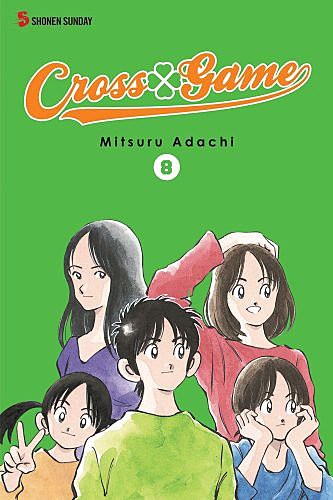 Cross Game
Cross Game
By Mitsuru Adachi
Published by Viz Media
Available: Viz store (print and digital) / Comics shops
Mitsuru Adachi's Cross Game, the latest sports manga from the legendary, multiple award-winning artist, is a delight. Adachi spends about as much time on the baseball as he does poking fun at his cast, exploring life in school, and cracking jokes about being a manga author. It came to its natural end this year, Adachi having reached the end of his story, and it's definitely a hallmark of the sports comics genre.
What's curious about Cross Game is that it isn't as concerned with performance as other sports manga I've read. Being good at baseball is of course an issue in the book, obviously, but it isn't the driving force. Our cast is good at what they do. Some of them are exceptional, and some are just okay, but generally, they all perform on a competitive level. Cross Game isn't about being the best. It's about fulfilling dreams.
The characters in Cross Game dream big, and we get to see how real life affects those dreams. The tension comes from the conflicts between characters, but we rarely see anything particularly devastating or horrible happen. Instead of waiting for the other shoe to drop, you read Cross Game to see people win. It's an uplifting comic, the kind that makes you feel good whenever you read it, no matter what happens.
Baseball is just the engine that makes the story go. Everyone's involved with the sport, and a large portion of the book is set during a series of games and practices, but you're really just reading to see how Ko Kitamura and Aoba Tsukishima's friendship is going to evolve this time. It's a good read and a good time.
FUNNIEST SUPERHERO SEX COMEDY ABOUT SEX AND STUFF
 Empowered Volume 7
Empowered Volume 7
By Adam Warren
Published by Dark Horse Comics
Available: Dark Horse/TFAW store and comics shops (print) / Dark Horse Digital
I'd long been aware of Adam Warren's much acclaimed superhero sexy comedy that simultaneously criticizes and celebrates the obvious sartorial inequities suffered by women of the cape-and-cowl set, but it was only in 2012 that I took the plunge via Dark Horse's extremely helpful omnibus editions and discovered that I'd been missing out on one of the most fun (and indeed sexy) comics I've ever read.
Empowered is a brave and true superherine whose various powers come from her hypermembrane supersuit, which, in what's plainly a bit of commentary on the depiction of female superheroes over the years, is so delicate as to become all but completely shredded in even the most mild of battles, and is so ridiculously skintight as to give Emp all manners of hangups, insecurities and complexes about her body (she is especially concerned about her butt, and it doesn't help that her roommate, a piece of alien bondage gear known as the Caged Demonwolf, does not stop remarking upon it). In a further bit of commentary that plays to creator Adam Warren's roots in manga and fetish art, Emp's powers diminish concurrently with her suit's, er, coverage, causing her to end up in curiously sexualized bondage at the hands of numerous supervillains and a laughing stock amongst her colleagues in the Superhomeys. Fortunately Emp has a great support system in the form of her best friend Ninjette -- who, in another break with convention, is actually a white girl from New Jersey -- and her awesome boyfriend Thugboy, a former henchman who reformed after a run-in with Empowered. Together, these four characters navigate a hyper-stylized and always cute and funny world of over-the-top villains, underpar superheroes and the variously compelling and humiliating mysteries of their own pasts.
Warren tells Empowered's story in the form of short vignettes that contain themes and threads that build over the course of a couple hundred pages to create a fairly unique graphic novel experience. It's like you've read a ton of short stories, yet also a single massive one. One gets the sense that Warren could tell an unbroken 200-page story if he wanted to, but he's having too much fun with the freedom of episodic storytelling, where he can divert to different characters and plots and avail himself of endlessly amusing chapter titles like "Thuperlame," "Do-Me-Riffic" and "Schrödinger's Catgirl." Emp breaks the fourth wall many times to introduce these stories, and those are occasions where Warren takes on a role that's like a more lovable version of Bugs Bunny's sadistic animator from Chuck Jones' classic "Duck Amok," drawing Empowered in ways that annoy her and prompt angry outbursts in his direction (and apologies to the reader).
I can't think of another comic that demonstrates just how much fun its creator is having than Empowered; it's like a joyous noise unto the lord of comics. Reproduced directly from Warrens' tightly rendered, super expressive pencils, this comic revels in the joy of characterization, comedy, action, sex, a great love story, and just pure old fashioned cartooning.
OUTSTANDING ACHIEVEMENT IN COMIC BOOK STORYTELLING (ABOUT LOKI)
 Journey Into Mystery
Journey Into Mystery
Written by Kieron Gillen
Artwork by Richard Elson, Alan Davis, Carmine Di Giandomenico, Barry Kitson, Stephanie Hans, Mitch Breitweiser, Whilce Portacio, and Dougie Braithwaite
Published by Marvel Comics
Available: Comics shops (print) / ComiXology (digital)
Planning. It's a good idea whose time has come. That sounds a little glib -- it is a little glib -- but the optimistically open-ended nature of many comic narratives does not lend itself well to planning. Both the ephemeral origins of the medium and the churn of writers on corporate comics have eroded any broad expectation of coherent long-form storytelling -- set-up, build-up, payoff -- beyond what fits in a single trade paperback. Chris Claremont was always an outlier, and his hyper-extended trails of breadcrumbs may have put the whole idea out of vogue.
But ambitious planning can happen, and it can work -- and like Hannibal, I love it when a plan comes together. Not only does it show respect for the audience and the medium -- stories should have structure, whether it's 22 pages or 200 issues -- but it also shows confidence and ownership on the part of the author. It shows, in a word, authority.
I'm not talking here about "having an end in mind." Goals are not plans. Maps are plans. Blueprints are plans. Plans are created by people with a vision of the whole, not just an idea about the destination. Kieron Gillen had a plan when he took on Journey Into Mystery (aka JiM). The extent of that plan only became clear to readers this year as his 25-issue run reached its conclusion, and the result was an enormously satisfying tale. Seeds were planted, stories were tended, and plausible but unexpected pay-offs were harvested in abundance, and the satisfaction of the ending made the whole work greater. The secret here is simple: Good endings make good stories, and good planning makes good endings.
And no-one would necessarily have expected it, which might be the most satisfying part. Gillen's leading man was Loki, a character for whom planning -- tricking -- is first nature, so it makes sense that there was an agenda at work. But this was a third-tier book that seemed unlikely to last very long, with a traditionally antagonistic supporting character as its lead, and not two, not three, but four crossover events shackled to its ankles.
Gillen put some of his best work into a book that could have been a footnote in his surging career. The book never got the time or the space it deserved, and Gillen worked around format and other industrial constraints that might have made other writers throw up their hands in despair, yet he made it stick. Journey Into Mystery was not the work of a journeyman writer. This was a man with a plan.
BEST ULTRA-VIOLENT SUPERHERO COMIC WITH HEART
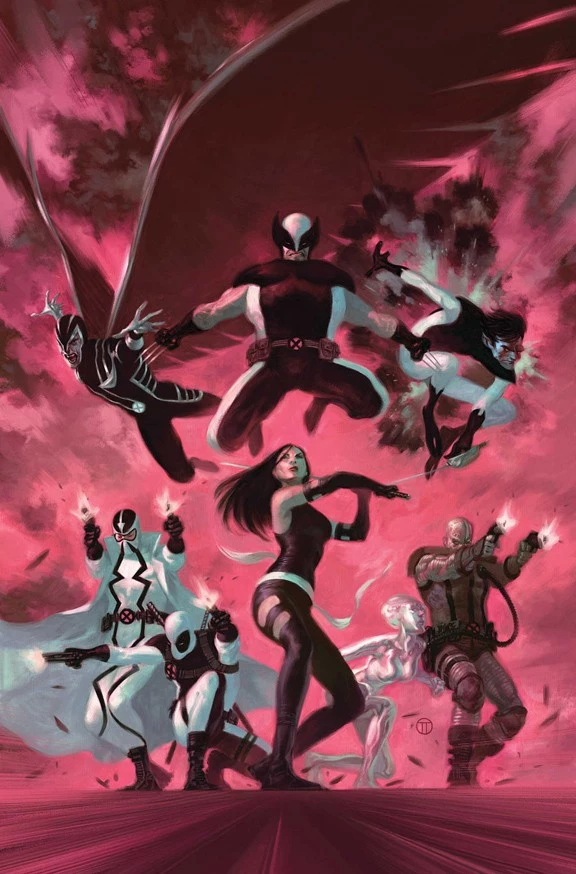 Uncanny X-Force
Uncanny X-Force
Written by Rick Remender
Artwork by Phil Noto, Greg Tocchini, Billy Tan, Robbi Rodriguez, Jerome Opeña, Esad Ribic
Published by Marvel Comics
Available: Comics shops (print) / ComiXology (digital)
Uncanny X-Force shouldn't have been as good as it was, but from the shock ending of the very first issue onwards, it proved it was ambitious enough to try -- and eventually, succeed at -- being a title that featured a raw, beating, humanist heart underneath the glossy, Jerome Opeña-rendered violent veneer. For over thirty-five issues the series tracked the adventures of Wolverine and a group of fellow mutants who shared the common bond of lethality as they carried out ultra-violent and morally dubious missions without the knowledge of the rest of the X-Men.
Despite its grim premise, Uncanny X-Force was in reality an extremely funny, imaginative, thrilling, intelligent, thoughtful, fun and, at times, deeply sad comic. The last issue of this book -- an almost perfect capstone -- was titled "Rainbows, Puppy Dogs & Sunshine," and it came off as a mournful epitaph rather than an ironic joke. Writer Rick Remender and artist Phil Noto closed the book on this chapter of the team with panache, and while I'm excited to see the title's remaining plot threads picked up in Uncanny Avengers, these 35 issues will remain a high point in Marvel's recent history.
MOST PAINFULLY/COMICALLY TRUE-TO-LIFE WEBCOMIC
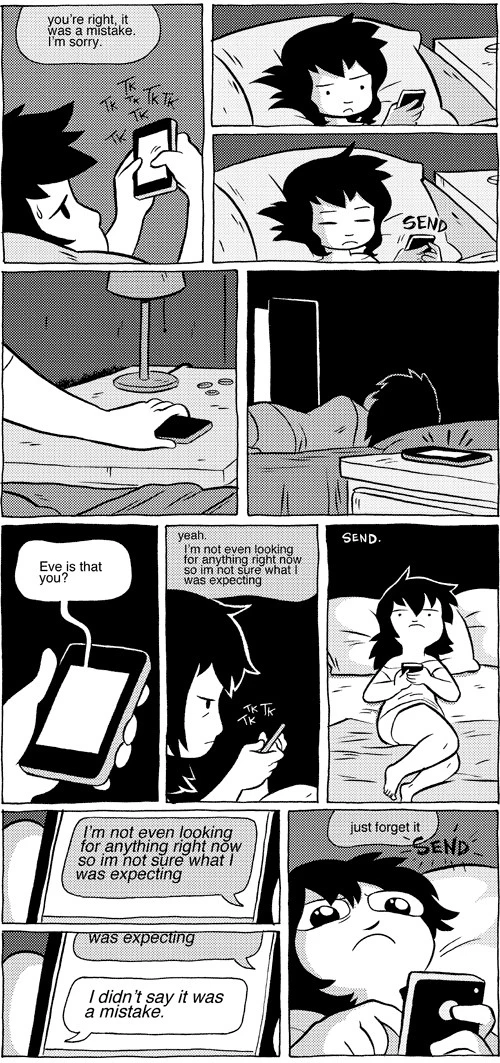 Octopus Pie
Octopus Pie
By Meredith Gran
Available: On the web (free) / Topatoco (print)
Written with earnestness and emotional depth and drawn with simplistic but purposeful black and white lines, Octopus Pie is likely the most honest comics account of what it's like to truly grow into adulthood. The main character, Eve, is a woman approaching 30 and getting through life the best any of us can. Eve's friends are the typical assortment of baristas, small-time drug dealers, interns, freelancers, and other post-college people so easily defined as hipsters. Instead of mocking a supposed lifestyle of metropolis dwelling young adults prone to obscure music taste and organic food, Octopus Pie sympathetically shows what it's like for the characters to find their place in a society that offers little direction or even hope to a generation doomed to be less economically successful than their parents -- all while realizing how absurd such a relatively privileged life can be.
Don't be too alarmed by thinking the webcomic will totally bum you out; Octopus Pie is funny. However, it's more in the tradition of British comedy, the kind that's always hinted with a touch of underlying sadness. Things don't always work out, and even when they do, not everyone gets to live happily ever after. And, perhaps most important, life never neatly wraps up events like plot lines, people continue to evolve and be defined, even dragged down, by their past actions.
Almost every persona is easily recognizable, full of defining characteristics, and perfectly at home in the comic's setting of New York City. Comparisons to Sex and the City aren't without merit due to the fearless sexuality of Gran's characters, but unlike the glamourous women in that fashion-obsessed television show, the characters in Octopus Pie struggle with everyday problems like being able to pay rent and keeping their hourly-wage jobs. If it's close to any TV show, the webcomic is more like what 30 Rock's Liz Lemon's life was like before landing a high-paying gig for a corporate studio. Octopus Pie also takes similarly hilarious liberties with reality, best showcased in the subplot of Eve belonging to a secret society of coffee pourers obsessed with rival beans and methods.
In addition to Octopus Pie, Gran kept busy in 2012 with work on BOOM! Studios' Adventure Time spinoff Marceline and the Scream Queens, which is also great. But let's hope she saves time next year to continue Octopus Pie, one of the best ongoing serials on the web.
Prison Pit Book Four
By Johnny Ryan
Published by Fantagraphics
Available: Fantagraphics (print + digital) / Comics shops (print)
Something wonderful happened when I read the first book in Johnny Ryan's annual Prison Pit series back in 2009. As I immersed myself in the book's preposterously profane power fantasy, the shame I'd accumulated over the course of a childhood spent making muscle-bound action figures say and do unspeakable things to one another stepped outside of my soul and was sucked forevermore into the tome's 120-or-so pages like... uh... Slimer into a Ghostbuster trap? I no longer felt like I'd wasted years of my life acting out crude monster battles. It was like looking at a baby book of bad ideas from boyhood as an adult who'd learned to function in polite society.
The fourth installment of Prison Pit built on the catharsis supplied by books two and three and proved the most intense yet. The cosmic criminal protagonist Cannibal F*ckface awakens from a previous skirmish the captive of psychic jerks clad in spiked 12-sided die helmets. He confronts his predicament like all of us wish we were able to, with a savage brand of defiance and constant dumb luck. From there the story follows its usual pattern of predictable unpredictability. An evil dude making his way across a barren hellscape bends anyone who gets in his way to his will through hyper-violent exchanges involving a cocktail of bodily fluids. It's as silly and gross and great as you secretly want it to be, page after page.
Our world isn't inherently a prison. Our allies aren't usually symbiotic limbs that act as weapons or instruments of self-pleasure. Our enemies are rarely literal scrotum-shaped mutants capable of birthing weapons of mass destruction from every one of their disgusting orifices. Children aren't mindless biomass brutes. We try to act like adults and cope with daily chaos and get along with others, and that's a good thing. Really.
For roughly half an hour a year, though, it's bliss to kick back and watch humankind's most immature impulses play out in the safety of Ryan's Prison Pit.
HOTTEST BARBARIAN SEX COMIC
 Conan the Barbarian: Queen of the Black Coast
Conan the Barbarian: Queen of the Black Coast
Written by Brian Wood
Artwork by Becky Cloonan and James Harren and Dave Stewart
Published by Dark Horse Comics
Available: Dark Horse/TFAW store and comics shops (print) / Dark Horse Digital
It was no surprise that Brian Wood, creator of Vertigo's brutal Viking battle comic Northlanders, would come out the gate at Dark Horse with a suitably exciting and violent Conan the Barbarian, full of the kind of bloody adventure and delightfully overwrought narration and ultra-manly exchanges you'd expect from Robert E. Howard's iconic warrior, where every issue feels like the hero has pulled some enormous weight from one fantastically exotic part of the ancient world to the other. But what did surprise me was just how damn sexy this comic would be.
Set during the titular barbarian's early 20s, this Conan story focuses squarely on his relationship with Bêlit, the dreaded pirate queen of the black coast who before had never found a mate worthy of her mystique and elemental beauty. It's a coupling defined by lust, power, submission, passion, and true love -- in that order. Contrasting extreme closeups of both characters' idillic physical attributes -- their pouty lips, sweaty muscles, naked flesh and those laser beam sex eyes -- with gorgeous vistas and scenes of extreme violence, artists Becky Cloonan and James Harren create an immersive fantasy world full of equal parts thrilling danger and smoldering desire. It's a world that's utterly unique in mainstream American comics today, where most romances remind you of network sitcoms, and where most depictions of a "strong, sexually empowered heroine" remind you of the T&A comics you thought were really naughty when you were 13. No, Conan the Barbarian is an adventure comic for grown-ups; a comic where the two heroes' passion for and devotion to one another drive the operatic story and inspire the at once sexy and grisly artwork to create a world you never want to leave. It's a story about two people whose passion is so savage, they're compelled to lay waste to every port of call and make love while cities burn.
Conan was a most welcome surprise in 2012, but as the Cimmerian's warrior code comes into further conflict with the pirate queen's dark, insatiable desires, I fully expect this series to become an even more compelling read in 2013.
BEST DAMN GRAPHIC NOVEL ABOUT A BUNCH OF DAMN GUYS ROBBING AN ENTIRE DAMN TOWN
 Parker: The Score
Parker: The Score
Based on the novel by Richard Stark
Adapted and illustrated by Darwyn Cooke
Published by IDW Publishing
Available: IDW store and comic shops (print) / ComiXology (digital)
If you're going to adapt a novel to into a comic, you have to do something different. I don't mean change the story, necessarily, but in some way you have to present some aspects of the story in a fashion that prose alone simply can't achieve. Otherwise, there really isn't much point. In the third installment of his adaptions of Richard Stark's Parker novels, Darwyn Cooke continues to do just that, and Parker: The Score might be the best one yet.
As with the first two installments, Cooke does a masterful job of portraying Parker exactly the way you'd assume Stark imagined the character: a big, serious, intimidating man, with a cold face and large hands that look like they were carved out of stone. But what separates this book from the others is the portrayal of other characters, and the way Parker interacts with them. The Score features a large group of men taking on a very large job -- robbing an entire town.
Each man has a specialty, something they bring to the job that no other can. Further, each man has his own personality, his own quirks, the most notable being Grofield. The closest thing Parker has to a friend in this group, Grofield is a showman/actor masquerading as a thief, or perhaps vice versa. As the robbery starts, we see exactly what Grofield sees: Music and theater. In his mind, Grofield isn't a man engaged in a carefully planned out robbery, he's Fred Astaire dancing with Ginger Rogers. He's Gary Cooper saving a town from a gang of killers. He's Lee Marvin in World War II. And in a series of panels, Cooke captures this perfectly, as we see glimpses into Grofield's mind of him jumping from role to role, until Parker tells him it's time to get serious. Each man in The Score reacts in their own unique way to the beginning of a heist, but none in a more entertaining way than the charming thief Grofield. In his novels, Stark tells you that Grofield loves to perform, but in this adaption, Cooke is the one who really makes him sing.
On a panel at San Diego Comic-Con earlier this year, Cooke said he believes that the late Donald Westlake, who used the pen name Richard Stark when writing his Parker novels, was a better writer than Raymond Chandler. For what it's worth, I'm inclined to agree with him, as the Parker books are among my favorite novels of all time. As a fan of both the Parker novels and Cooke, I couldn't imagine a more perfect marriage.
Somewhere, Donald Westlake is smiling.
MOST MANIFESTLY BEAUTIFUL SUPERHERO COMIC
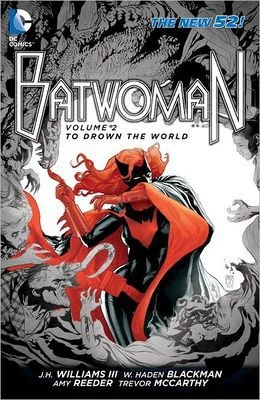 Batwoman
Batwoman
Written by JH Williams III and W. Haden Blackman
Artwork by JH Williams III, Amy Reeder and Richard Friend, Trevor McCarthy and Rob Hunter, and Dave Stewart
Published by DC Comics
Available: Comics shops (print) / DC Entertainment (digital)
The ongoing adventures of DC's first openly gay superheroine to star in her own title, Batwoman fuses JH Williams' graphic innovations from Promethea, where he seamlessly synthesized sequential art, illustration and design, with the noir approach he devised for Desolation Jones. Laid out almost exclusively in two-page spreads, Batwoman's typically nonlinear narrative is inexorably linked to Williams' idiosyncrasies as a storyteller, which often dictate that two consecutive panels might be constructed with different shapes and rendered in distinctly different styles depending on who's in them and where or when they take place. Even characters within panels are sometimes depicted in contrasting ways, such as this year's team-up with Wonder Woman, who was illustrated in a kind of ligne claire style even as she interacted directly with Batwoman, who Williams always presents in a tightly rendered and ink-washed, almost painterly fashion. In every case, the multiple styles, disparate as they can be, are somehow complimentary, creating a singularly perfect image that's beautiful, dark, violent, sometimes sexual, and everything else we love about comics in Gotham City.
While many popular comics artists have demonstrated that you can make a pretty picture by drawing circles and squares all over the place, Williams' use of design elements not only enhances the tone of the story he's telling, but in fact is actually helps tell that story. Williams plays with icons, emblems and other visceral images like lightning bolts, floating bubbles and musical notes to various dramatic ends. Sometimes he does so in ways as obvious but effective as framing a tense but exciting encounter between the Amazon princess and Gotham's dark heroine within their respective sigils, and as subtle and even hypnotic as... well, that would probably be spoiling something.
Batwoman's monthly schedule necessitates that Williams alternate storylines with other artists, and in a much appreciated break from the stylistically chaotic tradition of most modern superhero comics, there's been some care in selecting contributors whose talents for lavish pages compliment his own. Amy Reeder's manga-influenced storytelling style worked very well for the book, and Trevor McCarthy also has a gift for highly kinetic, elaborately staged action. Both artists' work on the series was informed and, from what I've heard, heavily art directed by Williams himself.
In one of the more bittersweet news items of the year, Williams is leaving Batwoman to work with Neil Gaiman on a new Sandman story for Vertigo in the new year. One is forced to doubt the future of this most aesthetically pleasing superhero book, but only because Williams raised the bar so incredibly high with Batwoman in 2012.
MOST ENJOYABLE FILTH FLARN FILTH
 The Monkey King Vol. 2
The Monkey King Vol. 2
By Katsuya Terada
Published by Dark Horse Comics
Available: Dark Horse/TFAW store / Comics shops
Let's be honest with each other: sometimes you need a little raunch in your life; a little bit of that exploitation magic. It's okay! Most of us are into that stuff, you know? It's cool. There's something incredibly entertaining about gratuitous nudity and violence. Maybe it's the taboo, maybe it's the overt titillation, or maybe it's just the fact that you know you're looking at something naughty. Whatever the reason, sometimes trash hits the spot.
Katsuya Terada's Monkey King is remarkably trashy. It probably isn't the trashiest adaptation of the legend of the Monkey King -- the distant source material for Akira Toriyama's Dragon Ball and countless other stories -- but it definitely goes for the gold. Instead of exploring the tale of Goku's journey to the west by examining enlightenment and how to become a better person, Terada zeroes in on the good stuff: weird naked girl-monsters, awful bug creatures, and the tremendous gouts of blood that come after you take a monster apart piece by piece.
In 2012 The Monkey King volume 2 finally arrived in the United States after a seven-year wait, and it is the most amazingly sleazy thing. It looks something like Richard Corben doing grimy gutter-fantasy with just a dash of Boris Vallejo. Some of the pages look like trashy fantasy novel covers, and others like the dirtiest fairy tale ever. Terada fills the series with BDSM tropes, exploitation cinema staples, and positively filthy -- but genuinely funny -- jokes. You can't defend it as being anything progressive, but man, is one entertaining comic book.
BEST UNAUTHORIZED SEQUEL TO A 200-YEAR-OLD LITERARY CLASSIC
 Frankenstein Alive, Alive!
Frankenstein Alive, Alive!
Written by Steve Niles
Artwork by Bernie Wrightson
Published by IDW Publishing
Available: Comics shops (print) / ComiXology (digital)
In 2012 Bernie Wrightson returned to the character that he made his own in comics, Frankenstein, the subject of the artist's revered 1983 adaptation of the Mary Shelley classic. This sequel is everything you could have hoped for. Truly, the uncommonly beautiful first issue doesn't even prepare you for the second -- which by comparison makes the first seem like Wrightson was just going through some warm up sketches. Of particular note is a two-page spread of a gothic library where every book and thing in this impossibly cluttered room has been painstakingly drawn around the monster, and it is but one of the truly feats of artistry found in this miniseries.
Beyond his unparalleled draftsmanship, Wrightson has always been a master at depicting the sort of existential terror at the heart of Frankenstein -- that here is a monster more afraid of us than we are of him. Here is a monster who is full of self-loathing and void, and whose initial urge in life is to seek revenge against the creator responsible for bringing him into terrible being. Wrightson has all of that down, and you can read it just in the weight with which the creature moves through the panels and how he haunts every setting he's put in. Your stomach twists every time he is rejected as a monstrosity. This way, Frankenstein Alive, Alive is like David Lynch's Elephant Man; it has a similarly brutal feel in terms of how we as the audience perceive the tortured main character.
For his part, Niles knows just when to turn the knife on us, and he also knows when to hang back in the shadows and let Wrightson's work be the show. The writer knows what we're seeing in any given is Bernie Wrightson on top of his game, and that's enough to lay waste to any challengers in any year. 2012 is no exception.
BEST GRAPHIC NOVEL ABOUT THE MOST CONTROVERSIAL THING IN THE WORLD
 Jerusalem: Chronicles from the Holy City
Jerusalem: Chronicles from the Holy City
By Guy Delisle
Published by Drawn and Quarterly
Available: D+Q store / Comics shops
Guy Delisle has become perhaps the ultimate comics foreign correspondent, producing comics work after comics work that synthesizes coverage of the politics and people of some of the hardest and least fun places in the world like North Korea and Burma/Myanmar with his travelogue-esque observations of the things he sees and the people he meets. Delisle came to be in the position by marrying a woman who works with France's Medecins San Frontieres (You probably know it as "Doctors Without Borders"), and he secured his reputation by being a world-class cartoonist.
Jerusalem differed dramatically from some of Delisle's past work because of how much the settings differ. Jerusalem is a city, not a country, but it's a city full of different cultures, religions and elements of nations. Jerusalem is just a city, but, in a way, it's a city bigger than any country in the world. It's also a place that isn't as foreign or alien to western readers -- those in Europe or North America, specifically -- as those he's visited before, and Jerusalem is a place where many of the people he encountered shared elements of his own culture and background.
The book itself differs significantly, as the many murky moral issues Delisle finds himself navigating for a whole year (and finds everyone he meets navigating for their entire lifetimes) are a lot less black-and-white than those witnessed in someplace like, say, Burma, where things could be easily broken up into two sides -- the government and the people -- and where the wrong and right side of most issues easily sussed out. In Jerusalem, as in Jerusalem, not so much.
Delisle's not a journalist and he's not exactly unbiased toward the morass of issues he encounters, nor does he shy away from sharing his own opinions explicitly. But his book is descriptive, not prescriptive. His comic focuses on the culture and the lives of the people in the city more so than the political and religious issues that inform that culture and those lives (Delisle, for what it's worth, is an atheist, so in one very important way, the various sects of Jews, Muslims and Christians that make their homes in Jerusalem and the surrounding environs have a lot more in common with one another than they have with Delisle). His journalism, if we want to call it that, is, like Delisle's humor, observational in nature, which makes Jerusalem: Chronicles from the Holy City -- an honest record of daily life in what is certainly the most controversial city in the world -- a graphic novel of great worth.
MOST GENUINELY TERRIFYING OH MY GOD I'M SERIOUSLY AFRAID TO GO TO SLEEP I'M NOT EVEN KIDDING HORROR COMIC
 Ragemoor
Ragemoor
Written by Jan Strnad
Artwork by Richard Corben
Published by Dark Horse Comics
Available: Comics shops (print) / Dark Horse (digital)
Richard Corben is one of those guys who, when he dies, will be a trending topic on Twitter. People will talk about how great he was and there will be all kinds of lovely things said about him. But here's the thing: Richard Corben is alive right now... and he is absolutely killing it. So let's celebrate him now, because in 2012 he and co-creator Jan Strnad put out one of the true monoliths in American horror comics with Ragemoor, the story of a living fortress and its infernal caretakers who must protect it from an invading horde of nightmarish creatures.
A lot of people in comics think they're making horror comics with their silly gore porn zombie ripoffs, but what they're really doing are adventure comics in goth makeup. Richard Corben is doing horror comics. Ragemoor is the scaly, gritty, grimy, body horror, claustrophobic return to brilliance that the genre has been crying out for. Stripped down to just pen and ink, Corben demonstrates why his line is one of the dominant horror lines of all time. There are pages in this book that you would swear come alive in the panel.
In some of Corben's previous work, especially the best stuff from the '70s, you could sort of criticize it by saying, "Well, but the story isn't that strong..." With Ragemoor, that is definitely not the case. Strnad collaborates beautifully with Corben, knowing both how to stay out of his way and still put him through his paces as a graphic storyteller. There are sections of this book that are as narratively strong as they are artistically mighty -- a huge huge compliment to Strnad's writing, given Corben's kill.
Ragemoor is horror reduced to its nastiest essentials. No filler. Not a wasted panel. In a year that was relatively weak for the horror comics genre (Mike Mignola's work exempt, of course), this book is a return to comic book horror glory by one of the masters who defined it. Truly one of the year's best.
BEST VERY IMPORTANT GRAPHIC NOVEL
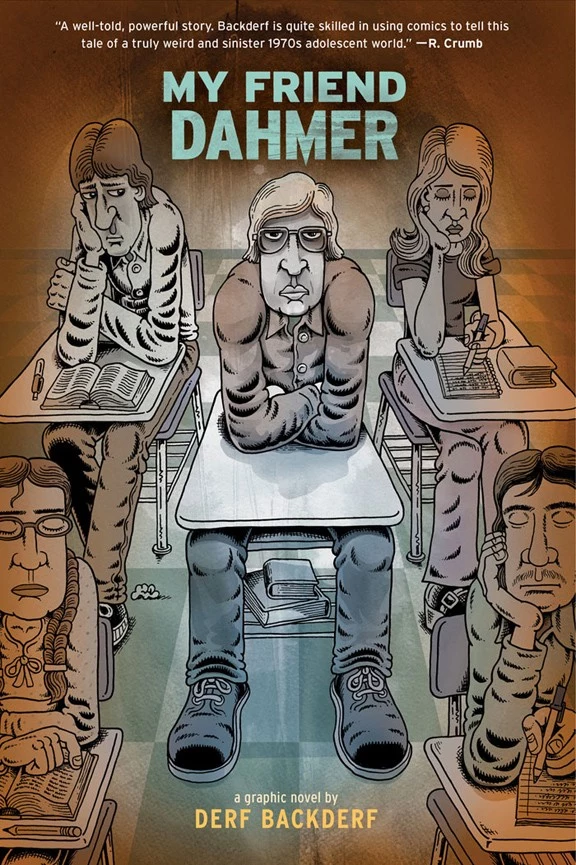 My Friend Dahmer
My Friend Dahmer
By Derf Backderf
Published by Abrams ComicArts
Available: Abrams store (print + digital) / Comics shops (print)
As with every calendar year were are a lot of really good graphic novels and a lot of pretty great graphic novels to choose from when it came time to pick out a handful to assign as being among the best of 2012. There are always far fewer important graphic novels, though; books that cover a difficult but vital subject matter delicately but boldly, fairly and yet with a point-of-view, books that do all of that and also happen to be really great on an artistic level.
Backderf's My Friend Dahmer, his 20-years-in-the-making memoir of attending the same high school as the weird, troubled kid who would eventually grow up to be one of America's worst serial killers, is just such a comic.
It's not always easy reading and may disturb readers on several levels -- perhaps no level more disturbing than the realization that whatever else Dahmer might have been, he was also a human being, and maybe not all that different from kids you went to high school with or, perhaps, in some ways, not so different from you yourself at that point in your life. Thankfully there aren't a whole lot of people like Jeffrey Dahmer, but there are and always will be people who kill, who murder, who become human monsters, and while BackDerf's's work might not help readers understand why that is or how some people end up becoming that kind of monster, this comic book does provide a context rarely available. One never before presented with the visceral immediacy of comics, and rarely from a long-time cartoonist who broke through to a whole new level of mastery of his form with this signature work.
BEST BALLS-OUT CRAZY SUPERHERO BATMAN COMIC
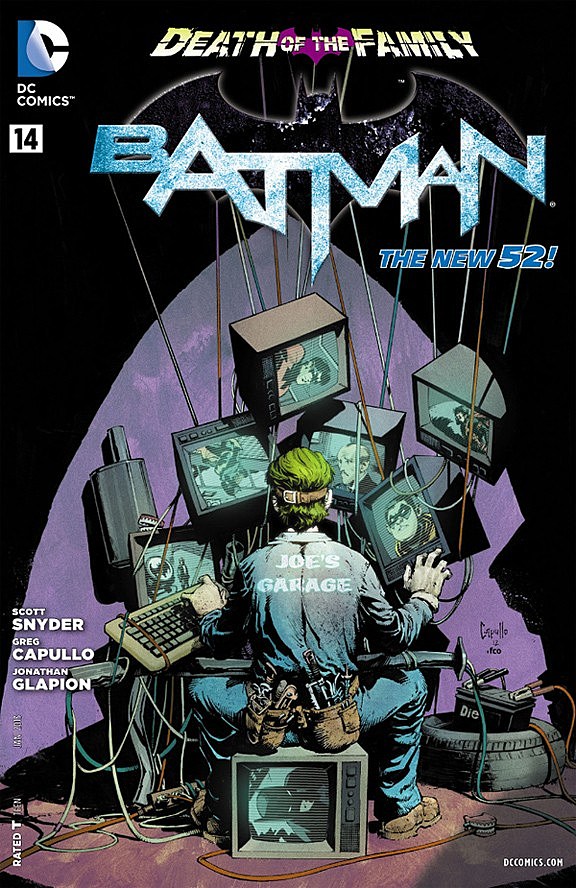 Batman
Batman
Written by Scott Snyder
Artwork by Greg Capullo and Jonathan Glapion
Published by DC Comics
Available: Comics shops (print) / DC Entertainment (digital)
Some people only like Batman when he's a grim, pulp-inspired loner, working on more realistic crimes without gadgets or other comic book weirdness involved. And you know what? That's fine. There are a ton of great stories out there about that version of Batman. But the thing is, Batman is a superhero who lives in a world where crazy superhero stuff happens all the time -- he's a guy who keeps a robot dinosaur in his billion-dollar anti-crime basement, after all. That's the Batman that Scott Snyder and Greg Capullo have been doing comics about for the past year, and they have been amazing.
Snyder and Capullo's run on Batman has essentially been built around two big events, "The Court of Owls" and "Death of the Family," and they're both rooted in classic superhero comics tropes. Evil twins, secret societies, vast conspiracies, poisoned reservoirs, secret identities and massive deathtraps -- these are the things that Batman has had to deal with in that comic, and it just keeps getting bigger and bigger with each issue. It's one of the few comics that's been able to take advantage of the malleability of the DC Universe in the aftermath of the New 52 relaunch by giving us a book where anything seems like it could happen. After 70 years, it feels like there are things we don't know about these characters and how they work. And it's an approach that's paid off. Snyder's work on "Death of the Family" in particular and the way he's constructed a twisted love letter that finds the Joker wanting to rid Batman of his weaknesses (read: sidekicks) to make him a better king for his kingdom is smart, solid work. If it manages to end as strong as it started, "Death of the Family" is going to go down as one of the most definitive portrayals of the Joker. There's no reason to believe it won't, either: Each issue brings something new, different and even more dangerous to the story, twisting classic ideas into surprises in each chapter.
It's also worth noting that Snyder and Capullo were the most consistently great team of the New 52; they went a full year without a fill-in and delivered quality comics every time. They've set the superhero action standard that the rest of DC should try to live up to.
BEST COMICS ABOUT SQUADS ON SUICIDE MISSIONS
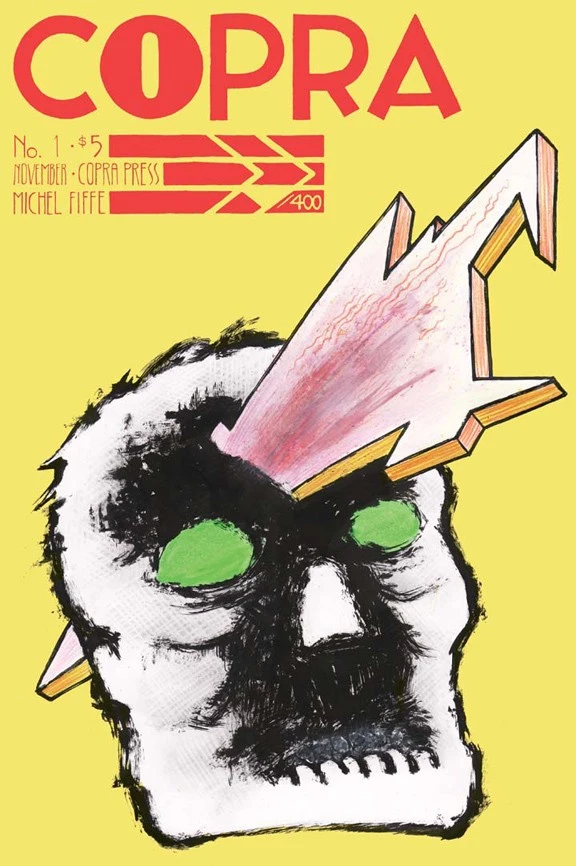
 Deathzone and COPRA
Deathzone and COPRA
By Michel Fiffe
Self-published
Available: Etsy (Deathzone in print) and Etsy (COPRA in print + subscription)
I think it's safe to say that Michel Fiffe's Suicide Squad fan comic, Deathzone, is the best issue of Suicide Squad in the last, oh, 20 years, with a passion and vigor that shames its corporate contemporaries. There's a real sense of affection for the concept and the characters originally assembled by Tom Ostrander, Kim Yale and Luke McDonnell for DC Comics, even when Fiffe's putting them through some really bizarre, dangerous situations, all wrapped up in some seriously lush art that owes more than a little to the best years of the Frank Miller/Klaus Janson comics machine.
Fiffe followed-up his fan comic about a bunch of disposable roughneck antiheroes fighting weird, existential threats with, well, another bunch of disposable roughneck antiheroes fighting weird, existential threats. His latest self-published monthly comic, COPRA, is a melange of everything you'd want from an action comic: tough heroes, crazy villains, shadowy conspiracies and a level of craft that is staggering for a cartoonist as relatively young as Fiffe is. In each monthly issue there have been a handful of innovative panels that manage to impress me with how well they use the language of comics to communicate the story. In a marketplace where a certain subset of comics exist purely as paper pitches for other media, it's refreshing to see a comic that's meant to be a comic, and one that is so fluent in that language, as well.
COPRA is a supreme labor of love, with Fiffe creating, writing, drawing, inking, hand-lettering, hand-coloring and distributing the whole thing every month. Even the production is meticulous, with a nice toothy paper stock that leaves you feeling like you've got your money's worth with each issue, as opposed to other publishers who offer up 19 pages of story interrupted by crappy house ads and printed on what feels like leftover paper from that Parade magazine that comes in the Sunday newspaper. An issue of COPRA feels substantial, both in terms of content and form.
MOST WEIRDLY EFFECTIVE MIX OF RELEVANT POLITICS AND COMIC BOOK ACTION
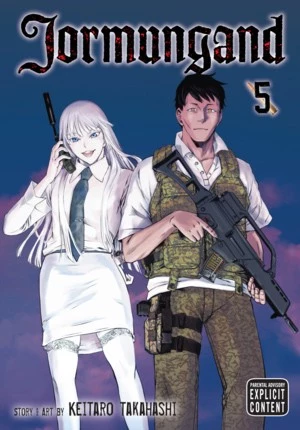 Jormungand
Jormungand
By Keitaro Takahashi
Published by Viz Media
Available: Viz store (print and digital) / Comics shops (print)
The last place I would expect to see a discussion of gun control and the effect guns have on our lives is in an action comic, but Keitaro Takahashi's Jormungand is as well-researched and thoughtful as it is stylish and savage. Jormungand features Koko Hekmatyar as a focal point. She's a globe-trotting arms dealer with a security squad that keeps her safe. The newest member of the squad is Jonah, a child soldier from a thinly veiled version of Afghanistan. The rest of the squad are all vets who trust Koko. Koko herself isn't the boring, bloodthirsty arms dealer you'd expect. She's young, talkative, goofy, and silly, up until the point where she decides you need to go and has one of her people take out all of your people.
That's not necessarily a great structure for a fun action tale, but Takahashi somehow pulls it off. There's a certain level of gun otaku flavor in Jormungand. There are several scenes where one character talks about how efficient or impressive a weapon is while characters either concur or listen in awe.
But Takahashi doesn't just stop at gun fetishism. He pulls in real life stats and research whenever he's discussing weapons in Jormungand. It's not just about the guns. It's about the culture and business of guns. It's about what type of person possesses the most guns, the failure of our leaders to indulge in much-needed charity instead of indulging in asinine arm races, and more.
Jormungand looks like a good action comic where people get shot, stabbed, and smoke cigarettes. I wasn't expecting it to come with a history lesson, but that definitely makes it a better comic. There's a lot to take in, and Takahashi makes sure that the comic stays fun, even when he's bringing in some of the most depressing aspects of real life. The child soldier aspect is off-putting, but it's handled in such an interesting way that I just have to keep up with Jormungand, despite my (minor) misgivings.
BEST FRANKENSTEIN COMIC - NON-WRIGHTSON GROUP
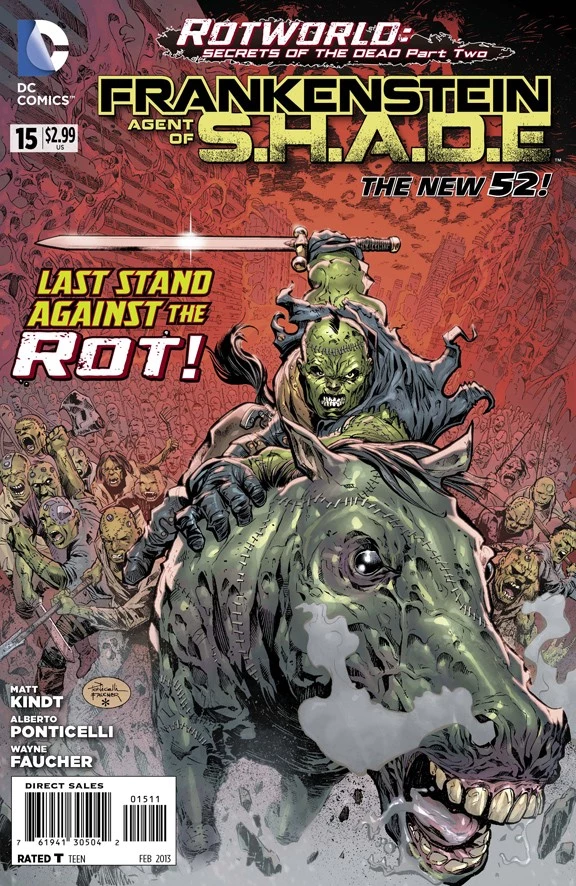 Frankenstein, Agent of S.H.A.D.E.
Frankenstein, Agent of S.H.A.D.E.
Written by Jeff Lemire, Matt Kindt
Artwork by Alberto Ponticelli and Wayne Faucher
Published by DC Comics
Available: Comics shops (print) / DC Entertainment (digital)
Remember The Monster Squad? That amazing movie from the late '80s with John Gries as the Wolfman and that dickish older brother from The Wonder Years playing another dickish character? OK, take The Monster Squad, make the monsters the heroes, give them a job with a superhero version of the B.P.R.D. crossed with S.H.I.E.L.D, make Frankenstein's monster the leader and make him quote the Dark Romantics and make him awesome and make heads explode and make a small but dedicated readership squeal with joy and make no plans past issue #16, because it's your last.
When Lemire departed the Frankenstein book halfway through the year, he left behind a great book for somebody to screw up. It had an original voice and a scope that seemed impossible for anybody else to capture. Unless, apparently, that anybody else was Matt Kindt. The already massive scale got bigger, the whir of ideas came even faster, and the characters, already interesting and complex, seemed to grow even more relatable. With sprawling, scratchy, angry artwork from Alberto Ponticelli and Wayne Faucher, the adventures of Frankenstein and the Creature Commandos were like colossal Kirby sci-fi epics starring your childhood fears. Soul-grinders! Leviathans! Monster planets! Self-hate!
Sadly, back in October it was announced that Frankenstein, Agent of S.H.A.D.E. would be pushed aside to make room for something else, while Frankenstein himself (the monster, that is) would join the cast of Justice League Dark. Which is actually a great home for the character; it's a high-quality book in a similar vein, with Frankenstein's original writer Jeff Lemire at the helm. Somehow, that just doesn't make the hurt go away.
Go forth, you hideous progeny! And prosper!
BEST ARMY BROS VS. GIANT MONSTERS COMIC
 Godzilla: The Half-Century War
Godzilla: The Half-Century War
By James Stokoe
Published by IDW Publishing
Available: Comics shops (print) / ComiXology (digital)
With Guillermo del Toro's big-budget mecha-vs-kaiju Pacific Rim movie coming out in the summer of 2013, I'm sure we will continue to see an increased interest in giant monsters and the men and women tasked with combatting them. But out of all the comic book versions of that scenario, the best available right now is James Stokoe's Godzilla: The Half-Century War, a comic that sets the acclaimed Orc Stain creator loose in the cinematic world of Toho, Ltd.
As I write this, only the first three issues of the five-issue miniseries have been released, but the shape of the story is clear: each issue depicts a decade-specific battle between the AMF (the Anti-Megalosaurus Force) and Godzilla (and friends), and as the years go on, things get increasingly more insane. The first issue opens in 1954, and while it's James Stokoe doing his hyper-kinetic, excitingly-detailed depictions of men and monsters and machines, it's the tamest issue of the bunch. It's mostly an issue about establishing the unusual and unexpected nature of the giant monster threat, and giving Godzilla a chance to unleash. By the time of issue #3, we've jumped ahead to 1975, the ragtag AMF-ers pilot a barely-souped-up Volkswagen van (with a trippy Mothra painted on the side) through the streets of Ghana, dodging giant spiders and lobster creatures and atomic breath blasts.
While a publisher like Marvel or DC might allow a creator like Stokoe to play around with their characters in a jokey anthology project like Strange Tales or Bizarro World, IDW and Toho have given the cartoonist a chance to have some fun with the Godzillaverse characters in a miniseries that actually has a substantial plot and character development. This isn't a pushed-to-the-side, oh-look-how-funny-it-is-for-this-indie-artist-to-draw-our-characters kind of comic. No. This is a great giant monster comic -– the best I've ever read -– that is full of humor and playfulness and absolutely stunning imagery.
This is what you get when you give James Stokoe the steering wheel and he takes off, with the rest of the comics industry saying, "where the heck is he going? Can we even try to keep up?" Maybe not, but we can all at least watch where he's headed and enjoy every moment.
BEST COMIC BOOK ANTHOLOGY NOT ENTIRELY DEDICATED TO THE ROCKETEER
 Dark Horse Presents
Dark Horse Presents
Edited by Mike Richardson and Jim Gibbons
Published by Dark Horse Comics
Available: Comics shops (print) / Dark Horse Digital
The comic book art I tend to enjoy most is that which aspires to create a world entirely different from the one in which I sit reading, and there are few creators who can do so as thoroughly as the writers, artists and other talents whose now-famous works made their earliest appearances in the pages of the original Dark Horse Presents. These sometimes quirky, often dark, undiluted excursions into the minds of uniquely talented creators is the true joy of reading anthologies, which for me have always been the kind of comics you read last from the pile; the ones that seem a little daunting compared to the comfort and familiarity of the latest issues from whatever ongoing series or creator you've been following for years; the ones that seem like it's only proper to read them in the middle of the night, or when you're home sick from school, whatever scenario that allows you to get lost in some storytellers' peculiar dreams.
Relaunched in 2011 in a new format -- 80 pages, no ads, perfect-bound -- the new Eisner-winning DHP has demonstrated that quality with every issue, hosting an eclectic mix of veteran creators and new talent alike, with content ranging from brand new short stories and idiosyncratic serials to the return of cult favorite characters and properties. Many of those creators and concepts can trace their roots back to the 1980s indie comics explosion that gave birth to the original DHP in the first place, like Francisco Francavilla and Brian Wood, whose Black Beetle and The Massive made their debuts in the new DHP before graduating to solo series. Of course, that's not to mention comic book legends who appear regularly, like Steve Rude, Mike Baron, Dean Motter and Sam Kieth, all of whom contributed work to the same 2012 issue of this always worthwhile anthology.
BEST ENDING - SUPERHERO GROUP
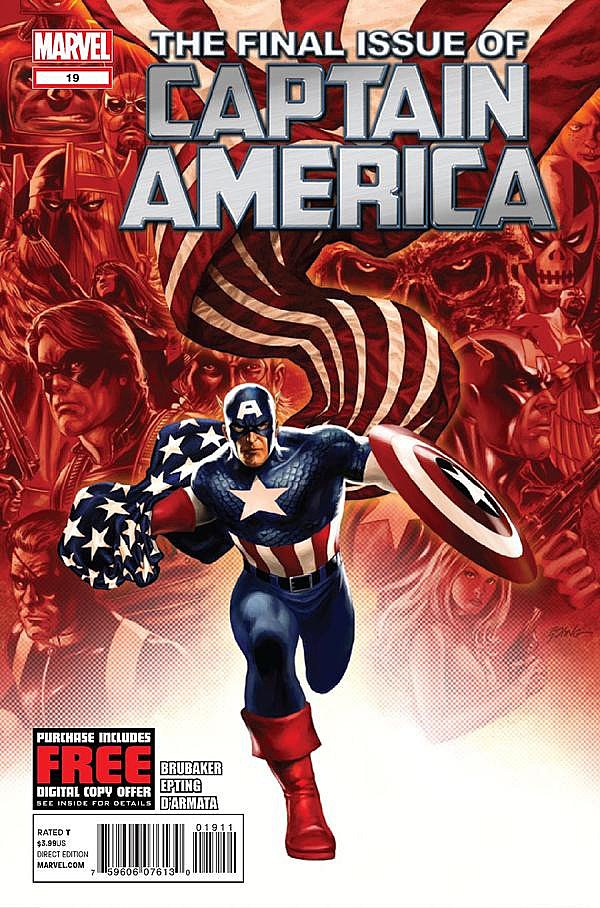 Captain America #19
Captain America #19
Written by Ed Brubaker
Artwork by Steve Epting and Frank D'Armata
Published by Marvel Comics
Available: Comics shops (print) / ComiXology (digital)
Finales are hard to pull off, especially when the audience is primarily made up of longtime fanboys and fangirls. It doesn't matter how good everything leading up to it is, if the swan song sucks, the whole thing leaves a sour taste in everybody's mouths. Lost and Battlestar Galactica, two of the most acclaimed television shows of the last decade, ended with series finales so poorly received you can't even mention either show without somebody visibly holding back their disdain.
Just a couple of months ago, there was something of a finale standoff at Marvel Comics. Within the span of just a a few weeks, several high profile writers stepped away from the long-running and quite popular books they'd been working on for several years. Jonathan Hickman left Fantastic Four and FF after three years; Matt Fraction ended his four-year Invincible Iron Man run with artist Salvador Larroca; and Ed Brubaker finally bid farewell to Captain America, a title he had been writing for eight years.
None of these finales disappointed. Invincible Iron Man and Hickman's books all brought great conclusions to runs that have been described as definitive in the modern age. They left no plot line dangling and made complete statements about the themes which drove each title. But although they were all very impressive, I think Captain America's was ultimately the most satisfying and emotional.
Re-teaming with artist Steve Epting, with whom he relaunched Captain America eight years ago and who went on to pencil and cover about 40 issues over the years, Brubaker provided the final word on his vision of Captain America. Years of the character's history were covered and re-examined while the symbolic power of the hero and the significance of his adventures were reiterated, but in a quiet, unassuming, and almost melancholic way that was as affecting as it was surprising.
BEST ENDING - BLOOD-SOAKED CRIME TRAGEDY GROUP
 Scalped
Scalped
Written by Jason Aaron
Artwork by R.M. Guera
Published by Vertigo
Available: Comics shops (print) / ComiXology (digital)
Pride goeth before a fall, according to the old proverb. In which case, the conclusion of Scalped shouldn't be all that much of a surprise. It is, if nothing else, a story about proud, often stubborn characters who use what power they have to shape the world to their liking. And yet when it all came to an end with August's issue #60 (collected in Scalped: Trail's End), the going standard for Vertigo finales (Preacher went to #66, but let's count it), the surprise came not in terms of what happened to these characters but how they ended up losing everything. Aaron and Guera did something that you can only really do in a comic with a predetermined endpoint. They set a landmine issues -- whole volumes -- ago that Scalped's protagonist, Dashiell Bad Horse, stepped on only when he believed his past sins might really be behind him.
That's a theme throughout Scalped, this idea that everyone pays for his or her transgressions eventually. When Jason Aaron was on the War Rocket Ajax podcast with Chris Sims and I a few weeks ago, he talked about how religion has informed virtually everything he has written. With something like Thor: God of Thunder, it's right there in the text. In Scalped, it's more about undercurrents. The only really religious character in the book is Catcher, who has justified his petty jealousies and crimes of passion over the years with his own twisted spiritualism. But the actual events of the book are downright biblical, Old Testament stuff. The hand of a vengeful God punishes the wicked.
But there's another side to that coin, one that the series' final pages communicate with such art and style that it's pretty saddening that Scalped could be one of the last Vertigo titles of its kind. (Vertigo has a hell of a track record wrapping up its various series.) After the wrath comes peace. For Dash, for Chief Red Crow, for poor Carol, whose life was nothing but volatility until she found some sort of purpose in the series' last third. Even for Catcher, to a degree.
The lingering final image of the series, the imposing sign that tells us we're now leaving the Prairie Rose Reservation, looming as a truck zooms away in the background, captures all the bittersweetness that comes with Scalped's end. Yes, these characters have lost their pride. For much of their lives it was the most important thing to them. But now, they can let it go. And wouldn't you know it, that's freeing.
BEST COLD WAR EYEPATCH MELODRAMA
 Fury MAX
Fury MAX
Written by Garth Ennis
Artwork by Goran Parlov and Lee Loughridge
Published by MAX Comics
Available: Comics shops
The Dave Johnson covers alone are enough to make you pay attention to this third attempt at a Garth Ennis Nick Fury series set amidst the land of Marvel's Mature Readers. Since its inception in 2001, Marvel's MAX line has given us a few notable projects -- Alias, Deadpool MAX, The Destroyer, Wisdom -- but if there's a prize for combining quantity and quality, Garth Ennis gets the gold medal. His Punisher comics for the MAX line (and various related spin-offs) are widely considered the heart and soul and blood and guts of the Marvel imprint. Ennis's MAX version of Frank Castle was driven and heroic and terribly flawed and vicious and iconic, and some of the best stories from Ennis's Punisher run were drawn by Goran Parlov.
Parlov and Frank Castle return in this new Fury MAX series, though the latter is only a bit player who appears once the comic settles into its history-hopping groove. This is a series about Nick Fury, specifically about his involvement with conflicts around the globe since the end of World War II. It's subtitled "My War Gone By" for a reason. Seven issues in, the series looks to have established its pattern: a few issues about American interventionism gone wrong, with Nick Fury near the center of the action, and then repeat. Each time it's a new debacle: the prelude to the Vietnam War in Indo-China, the Cuba crisis in the Bay of Pigs, and Saigon in 1970. Ennis seems to be using the series as a way to tie his interest in the history of warfare and combat and the human cost involved (see previous works like War Stories or Battlefields for examples) with an ongoing cast of characters that can be used to provide both a storytelling spine and a handy framing device.
This is old man Fury looking back on the not-quite-so-good-old-days, and it's smarter than it needs to be while still providing plenty of moments of visceral melodrama. Fury MAX might just be about sex and violence and politics and war, but it's really about those things and doesn't just use them as convenient set decoration.
MOST THRIZZLING COMIC
 Tales Designed to Thrizzle #8
Tales Designed to Thrizzle #8
By Michael Kupperman
Published by Fantagraphics
Available: Fantagraphics store, comics shops
Rather than describe how funny an absurd Kupperman's Tales Designed to Thrizzle #8 was, let me just quickly tell you what ground it covers. The issue pivots from eight pages of jokes about a madman talking about trains to a Murder, She Wrote parody that features goats. Then there's a page of fake ads followed by some biographical material about a swordsman obsessed with the direction in which one should cut. It wraps up with a story about how the moon landing was a big heist, while there's a running gag at the bottom of the page about weird salad dressing ads. There was no other comic this year like this.
In addition to that issue's unparalleled comedic prowess, Kupperman also was the creator of some of the year's best political cartoons over on The Huffington Post. They were ridiculous depictions of a ridiculous presidential election, and they did more to encapsulate the political theater of 2012 than anything that tried to jab Barack Obama or Mitt Romney on a particular issue or soundbite. Kupperman nailed it.
BEST CHOOSE-YOUR-OWN-ADVENTURE COMIC
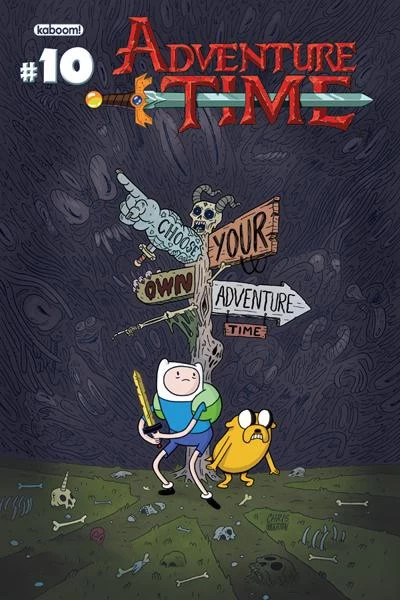 Adventure Time #10
Adventure Time #10
Written by Ryan North
Artwork by Braden Lamb and Shelli Paroline
Published by Boom! Studios / kaboom!
Available: Comics shops (print) / ComiXology (digital)
You begin reading the entry for Adventure Time #10 on ComicsAlliance's Best of 2012 list. You pause a moment, crack your neck back a little, and adjust your headphones. There. Oh, this is a good song.You wiggle your butt just a little. A bit of dancing never hurt anybody. >>If you are familiar with the Adventure Time cartoon and comic series, skip to paragraph three. If you are not familiar -- first off, what is wrong with you it is a good show you should watch it -- continue on to paragraph two. <<
The Adventure Time comic is, naturally, based on the Cartoon Network show about a very excited human boy named Finn and his stretchy dog friend, Jake, two best friends on the hunt for adventure in a magical postapocalyptic world inhabited by sentient breakfast foods, candy people, sassy old elephant ladies, elemental wizard kings with a proclivity for kidnapping princesses and all sorts of other interesting oddballs. A comic series launched earlier this year from Boom! Studio's all-ages imprint, kaboom!, written by Dinosaur Comics' Ryan North (who recently broke Kickstarter records with a campaign for a Choose-Your-Own-Adventure version of Hamlet) with art by Shelli Paroline and Braden Lamb. The comic series has been every bit as good as the show, with epic magic battles with an evil Lich, a multi-part time travel story, and a host of backup strips by some of the best indie cartoonists out there. But as impressive as those issue have been, issue #10 has proven to be the most ambitious yet, with a Choose-Your-Own Adventure hook that is flat-out great. >> If you weren't paying attention to this paragraph and just sort of skimming it, read it again. If you are interested in Choose-Your-Own Adventure continue to the next paragraph. If you are hungry, go eat a sandwich and come back. I will save your seat. <<
Issue #10 starts off with Finn and Jake getting magicked by the Ice King (he's the guy who likes to steal princesses), placing their free will in the hands of the reader. What follows is a series of escalating choices that lead you down multiple story paths which branch out to yet other choices and other story paths, until eventually you find yourself on a two-page spread where six different choices are playing out across the pages. It is a really clever issue, with every story being developed enough to make you want to experience them all. >> If you want to read the wrap-up paragraph, continue on. If you want to skip the last paragraph and go on to the next entry, I guess that's like, your prerogative. I mean, it kind of hurts my feeling a little bit, but whatever, y'know? Oh, and also uh, you step on a trap and you fall into a pit of hungry crocodiles. THE END. <<
It's a great issue, with wonderful writing and art, and a perfect example of the elasticity of the comics form, and a reminder that the stories you tell are limited only by your imagination and how hard you want to work to make them fresh and interesting. And you live happy ever after with a magic box that gives you sandwiches whenever you want one. THE END.
BEST SUPERHERO COMIC ORIGINALLY PUBLISHED MUCH, MUCH EARLIER THAN 2012
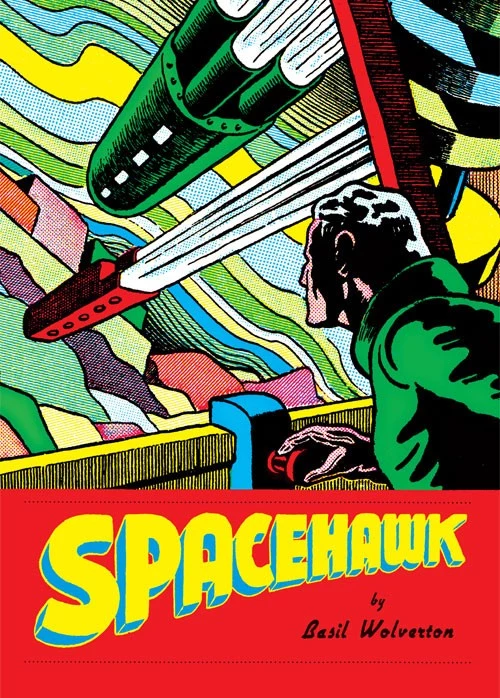 Spacehawk
Spacehawk
By Basil Wolverton
Published by Fantagraphics
Available: Fantagraphics store, comics shops
When you think "Golden Age Reprint," perhaps you picture Captain America slugging Hitler,
or Superman throwing gangsters into the river, or the Justice Society smiling after a visit to the
aliens who lived in fairy tale land. Those comics are great and all, but beyond their iconic imagery and zest for life they aren't always that engaging as reading experiences. They are formulaic and stiff and over-earnest even as they try to be light-hearted stories for kids.
Originally published between 1940 and 1942, Basil Wolverton's Spacehawk doesn't play that game. It nods in the direction of that game, but the rules it makes up and the variations it attempts gives this classic-but-barely-remembered- series a weirdo flair and a thrillingly unsettling sensibility. Spacehawk is not your father's sci-fi adventure comic. It's maybe your grandfather's sci-fi adventure comic, if your grandfather was an imaginative oddball who may not have played well with others, but was always entertaining to watch.
If you thumbed through the massive Spacehawk tome published by Fantagraphics -- it looks and feels like a Taschen art book, more than a comic -- you'd find the entire run of Wolverton's series about the outer space hero who calls himself "Spacehawk," and a quick flip might even remind you of some kind of Buck Rogers Technicolor serial as designed by Robert Crumb. That impression wouldn't be wrong, and there's definitely a Saturday-matinee-meets alt-comix energy to Wolverton's work in this book.
But there's even more to it than that. Wolverton gives us stories worth reading, partly because they show an artist engaging with the culture around him -– Spacehawk becomes a wartime hero a third of the way through the volume, turning his attention from Venusian princesses to more terrestrial foreign threats – but mostly because the short Spacehawk yarns in this volume are fast-paced and seemingly improvised and relentlessly unorthodox. Wolverton's work feels too dangerous and strange to have been allowed on the same newsstand as All-Star Comics or Superman, but it was a contemporary of both of those far-more-tepid Golden Age series. Spacehawk is the freakishly charming sideshow to the more popular main event, but everyone who's seen its wonders would find themselves bored with what the guy in the big hat in the center ring is babbling on about.
Fantagraphics hasn't reframed or high-culture-ized Spacehawk with this new presentation. What they've done is something more vital: given that pulpy Basil Wolverton comic the size and weight it deserves and brought it back to our attention
MOST ASTONISHINGLY SUCCESSFUL REDEMPTION OF AN "EH..." SUPERHERO NOBODY'S EVEN HEARD OF EVEN THOUGH, FOR SOME REASON, HE'S IN TWO REALLY BIG MOVIES
 Hawkeye
Hawkeye
Written by Matt Fraction
Artwork by David Aja, Javier Pulido and Matt Hollingsworth
Published by Marvel Comics
Available: Comics shops (print) / ComiXology (digital)
Why in the world should Hawkeye get his own series? He's a second-string hero, or at best a basement dweller on the first string. He's a wisecracking everyman, but he's no Spider-Man. He's a square-jawed all-American hero, but he's no Captain America. He's a latter-day Robin Hood in a colorful costume, but he's no Green Arrow. Sure, he was in the biggest superhero movie ever made, but he was also the marginalized extra, the Jeremy Renner among the Chris Hemsworths and Scarlett Johanssons. For all his vaunted skills as a marksman, he's never hit the bullseye in his bid for the big time. Hawkeye is not a hero of distinction.
Which is what made him the perfect guy for Matt Fraction and David Aja's brilliant makeover. Hawkeye the series has revitalized Hawkeye the character, and the key was recognizing that nothing new or valuable could be achieved by presenting him as a generic spandex superdude. We don't need another hero; not if all that hero offers is the usual formulaic derring-do and glossy thrusting. So writer Matt Fraction took a different approach. He embraced the fact that his guy isn't Spider-Man or Cap. Sure, no-one reviles him as a menace, but no-one really respects him as an icon either. In fact no-one really thinks about him at all. He's not the brightest, or the strongest, or the most inspiring hero in town. He's a blue-collar guy who likes to chase a girl, drink a beer and bum around in sweatpants. Fraction finds the humor and charm in showing us a superhero who thinks like a hero but looks and acts and talks like a guy.
And then there's David Aja. Aja's work on Hawkeye has been a revelation. This is a book and an artist that have emerged together as a sensation worthy of celebration. Aja's storytelling on Hawkeye is exceptional. In every issue he finds ingenious ways to pace and propel the narrative and to frame the action. He creates time and movement on the page in a way one might call cinematic, but to do so would be a tremendous disservice to comics. This isn't Aja aping cinema. This is Aja tapping into the full potential of the medium. This is comics.
BEST HIGH CONCEPT ALL-AGES BOOK THAT MOST OF OUR READERS CANNOT ACTUALLY BUY
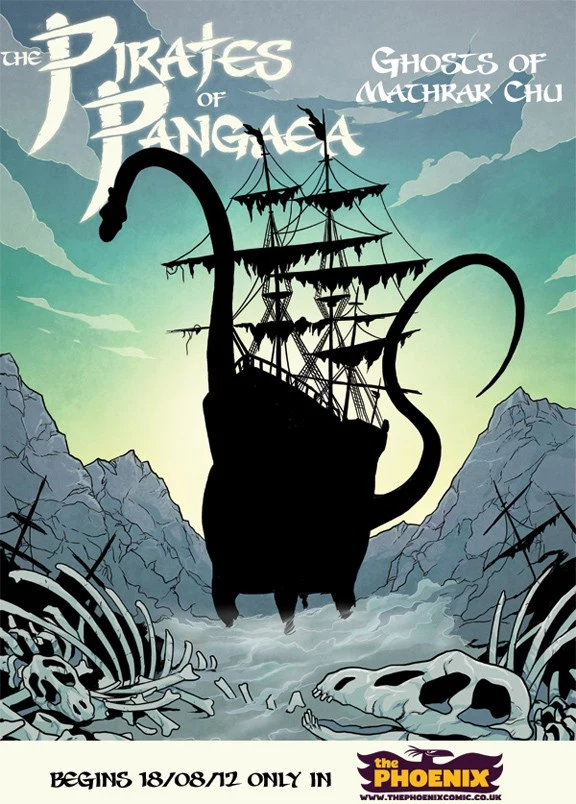 Pirates of Pangaea
Pirates of Pangaea
Written by Daniel Hartwell
Artwork by Neill Cameron
Published in The Phoenix
Availability: International subscription / UK comics shops
You know how every now and then, you see a comic with a concept so awesome that it actually makes you angry? Like, it's just too good, and you're mad at yourself for not thinking it up? That's how I feel whenever I read Pirates of Pangaea.
The concept behind it is a simple mashup of pirates and dinosaurs: a time-lost land colonized in the 1700s, where buccaneers move inward on ships strapped to the backs of giant brachiosaurs and wage bloody battles with pistols and cutlasses while riding saddled T-Rexes. Cameron's visuals bring you everything you want to see with that concept. He and Hartwell don't just let the hook to the heavy lifting, though, and the story that unfolds of 12-year-old Sophie, an upper-class girl kidnapped by dinosaur pirates who tames a T-Rex, is engaging and thrilling. The pacing's great, too, with the weekly installments building to an old-fashioned serial cliffhanger every eight pages, keeping things moving at a breakneck speed.
Unfortunately, The Phoenix is currently distributed in only the UK, which means that most of our audience here at America's Most Beloved Comic Book Opinion Website™ can't head down to the store and pick up a copy every Wednesday. The Phoenix does offer international subscriptions, but since having a weekly magazine shipped across a literal ocean is something you can only do if you have Bruce Wayne money (or a pal in the UK who doesn't mind putting together care packages every two months), it's not really feasible. It's a shame, too, since there's a lot of other good stuff in there.
But there's good news, too: Rumors of an internationally available iPad version coming in 2013. If we can get a collection of the first PoP story somewhere in there too, we'll be able to go ahead and start sorting out 2013's best of the year list.
THE ED BRUBAKER & SEAN PHILLIPS COMIC THAT CAME OUT THIS YEAR
 Fatale
Fatale
Written by Ed Brubaker
Artwork by Sean Phillips and Dave Stewart
Published by Image Comics
Available: Comics shops (print) / ComiXology (digital)
At this point it doesn't seem like a year in comics really happened without a great work by Ed Brubaker and Sean Phillips. The creators of ComicsAlliance favorites Criminal, Sleeper and Incognito had a big hit in 2012 with their latest project, Fatale. On the surface it seemed like more of the glorious same, an explicitly noir project featuring a dangerous and beautiful woman and some dudes getting into some really bad trouble, the kind of story that Brubaker and Phillips have proved themselves exceptionally good at telling. But from issue #1 it was clear that Fatale was not going to be typically anything.
Breaking with noir tradition in more ways than one, Fatale puts the titular femme at the center of the story as the seemingly immortal Josephine guides readers through a decades-long tale about seduction and the supernatural, where every man she loves is cursed to a terrible fate, and where she is pursued by a relentless evil. Josephine's operated in the '50s, '70s and the present, and goes back as far as the 1930s -- maybe further. But what Fatale explores more than period settings is genre settings, and the effect of the femme fatale on pulp, crime, horror, the wild west, wartime adventure and beyond.
The twisty-turny plot is among the most addictive of Brubaker & Phillips' collaborations, but as ever what makes their comic book work so exceptional is its wholly immersive nature. These collaborators create a mix of words and images so potent that you forget you're actually reading a comic and not just living in one.
I'LL MISS YOU THE MOST, NOW THAT YOU'RE GONE
 Twin Spica
Twin Spica
By Kou Yaginuma
Published by Vertical / Random House
Available: Random House store
I'm definitely the type of guy that prefers finite stories over eternally serialized adventures. I like books that get in, show me what the creators have got, and then immediately get out. Offer me a discrete experience that comes with both barrels blazing and I'm there, man. But sometimes stories end and I wish they'd gone on forever. Kou Yaginuma's Twin Spica is one such series.
I connected to Twin Spica in a big way. You know how you can be really, really into something as a kid and then totally forget you were ever into it? That happened to me. As I read Twin Spica, I remembered my days as a kid when I would pore over astronomy books and try to figure out how the universe worked. The mystery was fascinating and addictive, and Twin Spica nailed that feeling. It was uncanny, honestly, and the series soon became one of my favorites. It ended this year because the cast reached the end of their stories, and I found myself wishing that Yaginuma had actually padded out the narrative a little more. I just wanted another hit, even if it would compromise the integrity of the story.
Twin Spica is one of those comics that feels too good to lose. Buying comics is such a strange game, one fraught with "one bad issue" here and "new creative teams" there that you find yourself cherishing the books that hit the mark with every new edition. I know, I consciously understand, the fact that padding out Twin Spica would have been a mistake... but here am I, nonetheless.
It's a great little series, one that's well worth your time. There isn't any more, and I'll eventually figure out that that is a-okay. What we have? That's enough.
BEST COMIC ABOUT ACTUAL HUMAN BEINGS WITH ACTUAL HUMAN FEELINGS GOD DAMMIT
 Wet Moon, Vol. 6: Yesterday's Gone
Wet Moon, Vol. 6: Yesterday's Gone
By Ross Campbell
Published by Oni Press
Available: Oni store (print) / Comics shops (print) / ComiXology (digital)
Was there a comic book this year more emotionally devastating than Wet Moon's latest incarnation? Even if you hadn't read any previous volumes of the long-running graphic series about a diverse group of young women going to art school in a beautiful (occasionally hauntingly so) town in the American southeast, the sense of loss, dread, and brokenness that comes across this book are a marvel to behold. Ross Campbell, perhaps at this point better known for the relatively bombastic superhero series Glory, shows a delicacy in both his writing and art that most comics creators can't even pretend to have. Wet Moon is a world of characters whose stories are never told in other books, much less with the tenderness and truth that Campbell uses to cut his readers right down to the bone.
There is a sequence in this book that was for me the sequence of the year: one of the characters is on the phone, coming out as a lesbian to her mother on the other end of the line. Campbell so perfectly captures the horror of that moment -- that hope and that fear -- that the people who brought you into the world and told you they'd love you no matter what no longer will upon finding out who you really are. The horror that they'll reject you. The horror of having something so true and beautiful about you torn apart by those to whom you are most vulnerable. That is what is at play here in Wet Moon, and when the character's mother hangs up on her the anger and betrayal and hurt captured in the scene's final two panels, set against n otherwise black page, is a shotgun blast right to the heart. There are a lot of similar moments all through the six volumes Wet Moon, but that particular sequence -- just in the drawing of facial expressions from one side of a telephone conversation, is everything you know comics can be. The ability to communicate so much meaning and pain with sequential lines on a page is incredible.
Ross Campbell is an amazing cartoonist, and while there are a lot of examples of why his art is so great are out there -- his work on Glory and Teenage Mutant Ninja Turtles, just for a start -- if you really wanted to see this creator at the height of his powers in 2012, it was in Wet Moon.
BEST BARBARIAN HAIRSTYLE
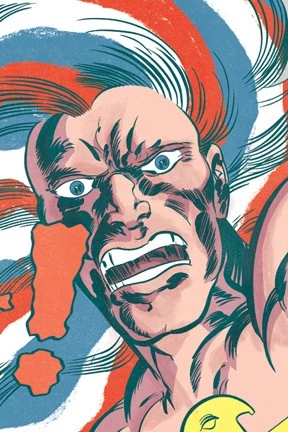 American Barbarian
American Barbarian
By Tom Scioli
Published by AdHouse Books
Available: AdHouse store (print) / Comics shops (print)
All seven sons of Yoosamon had pretty great heads of hair, striated with the colors of the American flag. You've heard of redheads, right? Well Yoosamon's sons were red-white-and-blueheads (Yoosamon himself lost his hair and went bald, but he still had a pretty boss red, white and blue goatee). The greatest head of hair belonged to the greatest of his sons, however: Meric, the title character in Tom Scioli's American Barbarian, a science fiction/fantasy series in which Meric and his clan must defend what's left of human civilization from the robotic remnants of the old world.
Meric's red, white and blue hair grew long and luxurious, and made him one of the more striking looking figures to walk the post-Apocalyptic earth of New Earthea. And given the fact that Meric's greatest foe is Two-Tank Omen, a giant pharaoh with tanks for feet, there are obviously a lot of striking figures to contend with. Meric's mane practically glows, and perfectly matches the energy trail left by the enchanted Star Sword he wields in. In addition to having the best hair of any comic book barbarian, Meric also happens to star in one of the best -- well, most awesome (which isn't quite the same thing, but close) comics of the year.
BEST SEMI-AUTOBIOGRAPHICAL, MULTi-DIMENSIONAL SUPER-SPY COMIC ABOUT DEATH
 Casanova: Avaritia
Casanova: Avaritia
Written by Matt Fraction
Artwork by Gabriel Bá and Cris Peters
Published by Icon Comics
Available: Comics shops (print) / ComiXology (digital)
The third volume of Casanova was notable for several reasons: the move from Image Comics to Marvel's creator-owned Icon imprint, full color rather than the two-tone look of the previous installments, the triumphant return of artist Gabriel Bá (more on that later), the revelation of Newman Xeno's true identity, and four issues as opposed to seven. Some hardcore fans didn't care for the structural changes, but the story, the ideas, and the execution were all strong enough to continue Casanova's reputation as one of the most energizing books of the last few years.
Casanova manipulates the form and idiom of the adventure comic book in interesting ways, relaying autobiographical events through the super-spy genre to tell a story that's always challenging and never predictable. The darkest arc of the series so far, Avaritia concludes the first act in spectacular style: by bundling up a a bunch of extant storylines and setting them on fire. A fascinating, kinetic read, the highlight of the volume is the unbelievable artwork of Gabriel Bá, whose style has definitely evolved while he was away on other projects during Casanova's second volume. Modular timelines, rotating universes, the collapse of the space-time continuum, giant robots, and panda murder have never, ever looked better.
FANCIEST PANTS COMIC
 Zaucer of Zilk
Zaucer of Zilk
Written by Brendan McCarthy and Al Ewing
Artwork by Brendan McCarthy
Published by 2000 A.D./Rebellion/IDW Publishing
Available: Comics shops (print) / ComiXology (digital)
Brendan McCarthy and Al Ewing's Zaucer of Zilk is about a lot of things. It's about the inevitability of getting older, it's about celebrity, it's about transformations and magic and friends and power and responsibility and being a hero when nobody expects you to be and remembering who you are and growing up a little. It's a pop art fairy tale that sets the controls of the yellow submarine for the heart of the second star to the right, and straight on till morning. And it's all told through the prism of eye-meltingly psychedelic art.
Zaucer of Zilk also a comic that, while dealing with some very heavy concepts, never lets itself get bogged down by the weight of its message. I mean, the main character, a powerful wizard named the Zaucer of Zilk -- it's a title, like the King of Siam -- has to track and trap a magical pair of technicolor Fancy Pants to sneak into an evil wizard's dimension. It's a comic where that same character has to disguise himself as a tooth and has a best friend who's a blue talking dog. It's full of bad puns and great characters. In the land of Zilk, Ewing and McCarthy have created a fantasy world with its own logic that works with minimal exposition or explanation. Of course he has to track the pants down and wrangle them onto his legs. It's the perfect mix of the ridiculous and the sublime, expressed with an even-handedness that keeps the whole thing from tipping too far into either full-blown po-facedness or twee tediousness.
Track it down. Just read it. It's a keeper.
BEST DESECRATION OF THE MEMORIES OF VENERABLE GENIUSES
 The Manhattan Projects
The Manhattan Projects
Written by Jonathan Hickman
Artwork by Nick Pitarra and Jordie Bellaire
Published by Image Comics
Available: Comics shops (print) / ComiXology (digital)
We haven't been demanding all that much from our revisionist history in the past few years. As a culture, we've decided that it's OK to pepper a few zombies into a classic piece of literature here or make the greatest president in American history a vampire hunter there. It's not that those works are bad, they just seem... let's say uninspired.
Were lucky we have Jonathan Hickman and Nick Pitarra to make up the difference. The characters in The Manhattan Projects, most of whom are the real-life scientists who participated in The Manhattan Project, the government initiative that resulted in the development of the atomic bomb, are far afield from what history affirms they were. Robert Oppenheimer never had a serial killer twin brother. He also never ate alien brains. Albert Einstein never knocked out a smarter alternate-universe version of himself and replaced him in that reality. Harry Daghlian died from radiation poisoning, he never became a floating, irradiated skull in a special suit. He died.
Yet in Hickman and Pitarra's world, all these things did happen. And anything could happen, because there is an unlimited universe of possibility. These creators didn't take the world as it was, and these characters as we know them, and just shoehorn in a few aliens. These creators have rearranged their characters' lives and realigned their DNA to make them their own standalone fictional characters. There's the real Richard Feynman and then there's immense egotist Richard Feynman, who figured out a way to project the reawakened consciousness of President F.D. Roosevelt onto a television screen. There's the real Wernher von Braun, and then there's the Wernher von Braun who has a robot arm and kills a room full of Nazi scientists so that he's the only one with the Knowledge of the Science left.
Hickman and Pitarra dispose of the story of the atomic bomb -- which involves Harry Truman presiding over an elaborate Masonic ceremony while scientists reboot FDR's brain -- in the series' third issue. And then they go well beyond it. The creation of the greatest horror of our time is barely the start of what The Manhattan Projects will cover. If that were reality, it'd be terrifying. As a story, it's captivating.
BEST SUPERHERO COMIC DESIGNED SPECIFICALLY FOR TABLETS
 Justice League Beyond
Justice League Beyond
Written by Derek Fridolfs and Dustin Nguyen
Artwork by Dustin Nguyen
Published by DC Comics
Available: ComiXology (digital, naturally) / Comics shops (print, if that's your thing)
The ComiXology app for the iPad (and other tablets and phones and whatever you're into) has given us immediate and convenient access to all kinds of comic books, from the newest, sold-out-at-your-local-shop Image books to those "Age of Apocalypse" tie-ins that you read when you were younger but don't have handy when the nostalgia kicks in. And as the digital format becomes increasingly popular, everyone's inching toward original comic book content for these portable electronic devices.
The best of the bunch, as far as superhero comics are concerned, isn't the fanciest or the most interactive or the most motion-tastic: it's the one that packs the most exciting, rapidly accelerating story into brightly-colored, cleanly-drawn panels. It's the one that builds on the old and does something new, in the simplest, most effective way possible. It's a good story, well-told. It's Derek Fridolfs and Dustin Nguyen's Justice League Beyond.
Operating outside the confines of DC's New 52 line and using the mythology of the decade-old Batman Beyond animated series as the backdrop, this 99-cent, semi-bi-weekly digital original gives us the continuing adventures of future Batman Terry McGinnis and the Justice League of the mid-21st century. Superman is here, partly gray and partly more somber after the losses he has suffered. Warhawk, son of a former Green Lantern and a former Hawkgirl, remains a pugnacious part of the team. Micron has replaced the Atom. Kai-Ro has replaced Hal Jordan. Aquagirl has replaced her father. And the Jack Kirby-created Big Barda is a vital member of the team.
Almost immediately, the breathlessly-paced plot events take the characters from a Kobra cult to Dinosaur Island to Project Cadmus to far off space, where they get involved with what's left of the war between the New Gods and the forces of Apokalips. A few times during the run of Justice League Beyond, the main action takes a break while we flash back to various origin stories drawn by guest artists -– Eric Nguyen draws Warhawk's story, James Bouwer draws Aquagirl's, Ben Caldwell draw's Barda's -– but while those artistic showcases look nice, it's the Fridolfs and Nguyen main tale that's most worthwhile.
This is a Justice League comic that's bound up in the iconography of the DC Universe, but it's not burdened by the events of the past, and Fridolfs and Nguyen don't seem overly concerned about making the issues seem weighty or portentous or even cool. They seem like they want to tell a story that zips along and has emotional stakes and plenty of conflict. They do it exceedingly well.
ALBUS DUMBLEDORE PRIZE FOR SCHOOL WE TOTALLY WISH WE WENT TO
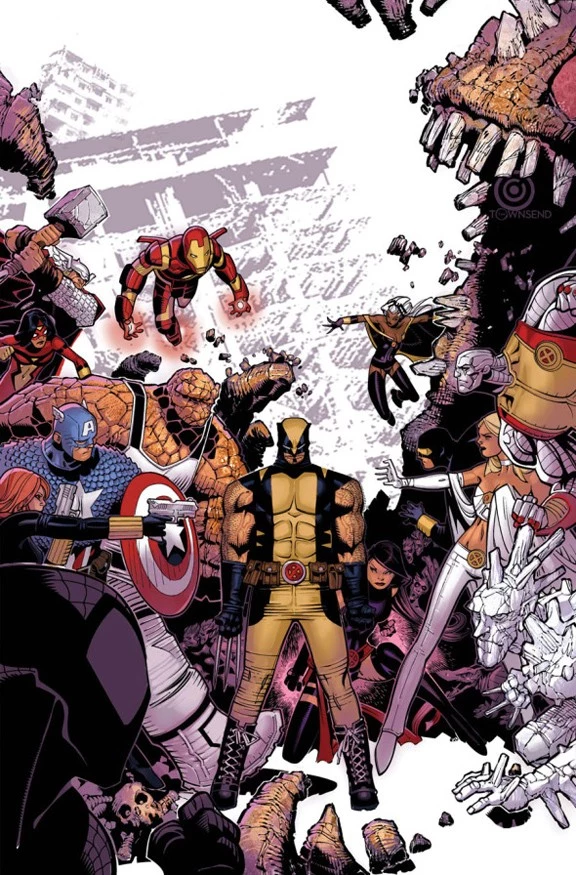 Wolverine and the X-Men
Wolverine and the X-Men
Written by Jason Aaron
Artwork by Nick Bradshaw, Chris Bachalo, Jorge Molina and Steve Sanders
Published by Marvel Comics
Available: Comics shops (print) / ComiXology (digital)
When I was a kid the thing I loved most about the X-Men (aside from, you know, all the stabbing) was the idea that these characters were all based out of a school. Mutation is, after all, a big metaphor for the changes that you experience growing up, and that fantasy -- that the changes you go through as a teenager make you more powerful and that there's a place out there where you can grow and learn and use your gifts to be awesome and fight against evil -- is the franchise's biggest, most appealing hook. Unfortunately, that often gets lost along the way, with the core characters growing up and turning their attention to international politics and the future of their race. The last time there was a real focus on the X-Men as a school (New X-Men: Academy X), it ended pretty disastrously with most of the cast being exploded into tiny little bits.
With Wolverine and the X-Men, though, the school concept not only returned, but it's better than it's ever been. In an interview about Young Avengers, Kieron Gillen described what's known in the series as the Jean Grey School as being like Harry Potter's Hogwarts, and he's not wrong. It's downright magical, full of adventure and danger, superhero teachers, fundraisers that involve going to outer space casinos, and best of all, it's bursting at the seams with ideas. Bringing back Krakoa, "The Island That Walks Like A Man," and giving it a new position as both a student and the school grounds? That's pretty amazing -- and that's just the setting. When you throw in the villains, the most recent of which was an evil circus with zombie clowns run by the Monster of Frankenstein, you can see how big and wild things are getting. It's a book that doesn't just know its potential, but does its level best to realize it in every single issue.
The end result is one of the most fun comics on the stands, and one that's about as close to my platonic ideal of an X-Men book as anything possibly could be.
BEST WISEASS TALKING ANIMAL COMIC
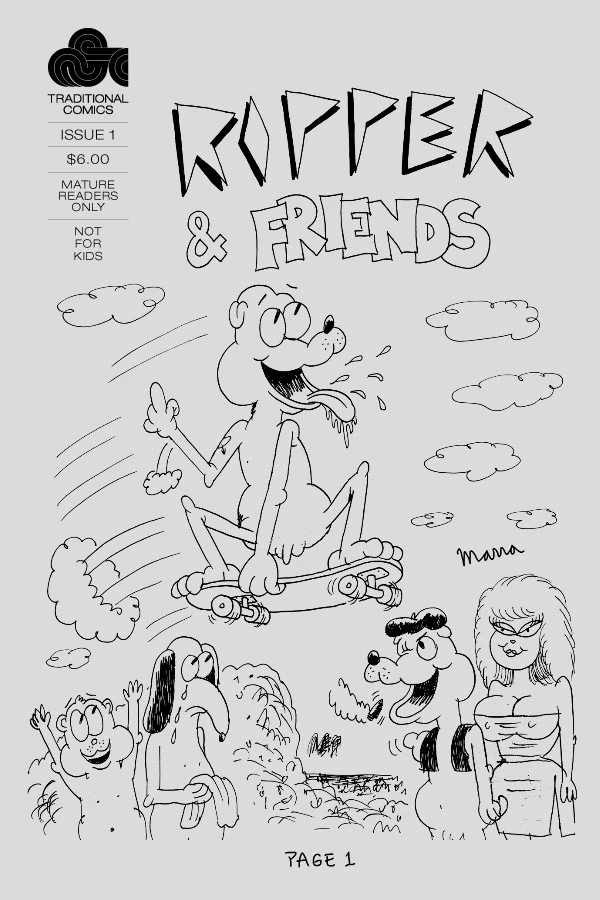 Ripper & Friends
Ripper & Friends
By Benjamin Marra
Published by Traditional Comics
Available: Traditional Comics store
Benjamin Marra may have made a name for himself in comic book circles with exploitation comics like Night Business, Gangsta Rap Posse, or Lincoln Washington: Free Man, but for years he has been secretly working on a masterpiece of an anthropomorphic "dawg" comic, working in isolation to create what he terms "The Anna Karenina of junkyard dogs" in the form of 2012's Ripper & Friends.
Okay, I may have made most of that stuff up. But it is true that Marra has done some unabashedly devious exploitation comics that have made him an alt comics superstar, and his most recent release is a comic about a rad skateboarding dog named Ripper. He hasn't, however, been slaving away on this project for years, and he's certainly never compared it to Tolstoy. No, this is likely the quickest 48-pages of comics he's ever produced. His usually detailed, heavily shaded linework is replaced by sketchy pen lines that look like doodles from a detention notebook.
When I bought my copy of Ripper & Friends from Marra at the Brooklyn Comics and Graphics Festival back in November, I asked him what inspired him to do a comic so unlike anything else he'd done before. He admitted that it was a comic he'd never thought he'd draw. The type of thing he'd never even imagine that he'd be interested in drawing. But he was playing around with some goofy doodles of a skateboarding dog, and a friend asked him if he planned to turn it into a comic.
"No," he told his friend. "I wouldn't want to draw a whole comic like this. That's not my stuff."
Marra told me he couldn't get the idea out of his head, and this idea of a vile, take-no-prisoners
uncouth parody of 1980s cartoons like The Cadillac Cats turned into his next project. It even
ends with a theme song for Ripper and his pals.
In Marra's cartoon world, the dogs of Jericho Railyard have to dodge the menacing Dog Catcher
and look for ways to have a rockin' good time, but everything is sordid and nasty. It's the
underbelly of the world presented in Marra's other comics. These are the cartoons that would
be featured on Saturday mornings in the apartments of Night Business or the housing projects of Gansta Rap Posse. Ripper & Friends isn't for anyone easily offended, but if you can tolerate a
foul-mouthed doggie flipping you the bird, you might find a wickedly good time.
BEST GONZO FREAKOUT MELEE COMIC
 Butcher Baker, The Righteous Maker #8
Butcher Baker, The Righteous Maker #8
Written by Joe Casey
Artwork by Mike Huddleston
Published by Image Comics
Available: Comics stores (print) / ComiXology (digital)
If you have never picked up an issue of Butcher Baker, the Righteous Maker, imagine The Dark Knight Returns meets Smokey and the Bandit written by Hunter S. Thompson and illustrated by the illegitimate offspring of Tex Avery and Bill Sienkiewicz. Then add a bag full of feral cats and inhale a bunch of DMT. In a year full of some pretty crazy comics, the final issue of Butcher Baker was the craziest of them all.
Written by Joe Casey with art by Mike Huddleston, Butcher Baker is the story of the greatest superhero of them all coming out of retirement to fulfill one last job, bringing him back into conflict with old enemies and face-to-face with what it really means to be an American hero -- only with tons of sex, psychedelia, the President of Reality, an omniscient hermaphroditic villain called The Absolutely, more sex, a hilariously ornery sheriff named Arnie B. Willard, Jay Leno, Dick Cheney, and did I mention the tons of sex? Butcher Baker is in many ways an homage to the brilliantly edgy comics that populated the '80s like Frank Miller and Bill Sienkiewicz's Elektra: Assassin and Howard Chaykin's American Flagg, and draws on some ideas that Casey first explored way back in Automatic Kafka, with a character called The Constitution of The United States, who retired from superheroics to become the world's most famous porn star. So... it's definitely not for everybody.
Butcher Baker is so gloriously over-the-top it actually makes Stallone's Over the Top seem pathetically below the top in comparison. Unfortunately, that altitude could not be maintained, and after a ten-month hiatus following issue seven, the last issue was released in August and problems associated with that delay make it seem highly unlikely that Casey and Huddleston will collaborate again. It's a shame. Casey is at his best when paired with an artist willing to sling all kinds of crazy right back, and Mike Huddleston is definitely that. His artwork on this title was maniacal. Long live Butcher Baker.
MOST BREATHTAKINGLY INSANE VALUE FOR YOUR DIGITAL COMICS DOLLAR
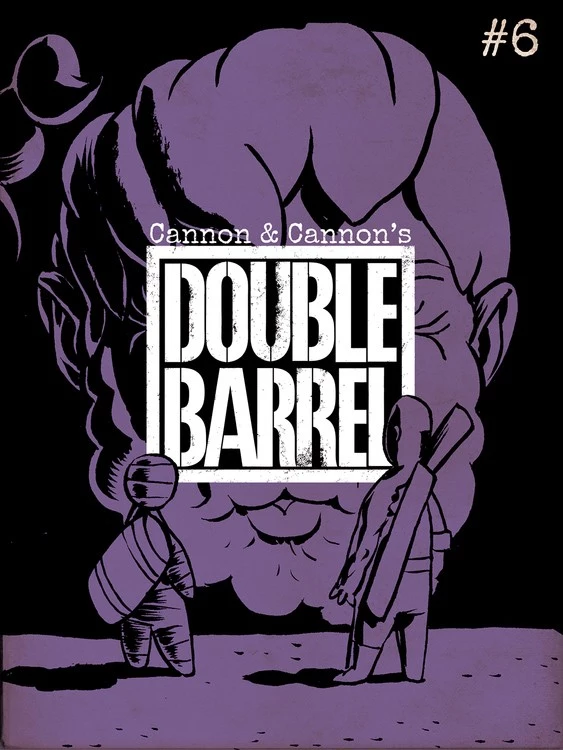 Double Barrel
Double Barrel
By Zander Cannon and Kevin Cannon
Published by Top Shelf Productions
Available: Top Shelf store
2012 was a huge year for digital comics. More than one all-digital publisher made a serious go of things this year, and a ton of great comics never got committed to paper (in a good way). But the most audacious digital comics initiative of the year came from a publisher known for beautifully packaged graphic novels, Top Shelf. Creators Kevin Cannon and Zander Cannon (no relation) decided to take two nearly-finished graphic novels, Kevin's Crater XV and Zander's Heck, and serialize them digitally in a two-story anthology title. They wanted to get these comics into readers' hands in a more immediate way, since print publishing involves months of waiting.
But that's not the audacious part. The really jaw-dropping thing about the Double Barrel experiment is that the first issue was 122 pages and cost two bucks. The second issue? 100 pages. The shortest of the bunch, issue #4, was 81 pages. Two dollars. And all but the newest issue has since been reduced to a buck. That's nuts. It's damn near inconceivable.
And it's not like these comics are just tossed off. They're intricate works by two highly accomplished comics pros. Heck is about a tortured and guilty man putting himself through a literal hell. Crater XV is a swashbuckling pirate epic with layers upon layers of story. And because the two Cannons are, I don't know, workhorses? Masochists? Want to single-handedly increase the value of a dollar? Each issue also has a handful of thoughtfully answered reader questions, a mini-comic or two about the creators themselves, and a behind-the-curtain section in the back about how to get off your own butt and make comics yourself.
In an era of comics that's often been called the era of "decompression," one where $3.99 gets you maybe 10 minutes worth of reading, it's crazy to think that anyone might say they feel guilty for paying too little for a comic. But Double Barrel makes me feel that way. It's creator-sanctioned theft.
MOST RELIABLY AWESOME MANGA SERIAL
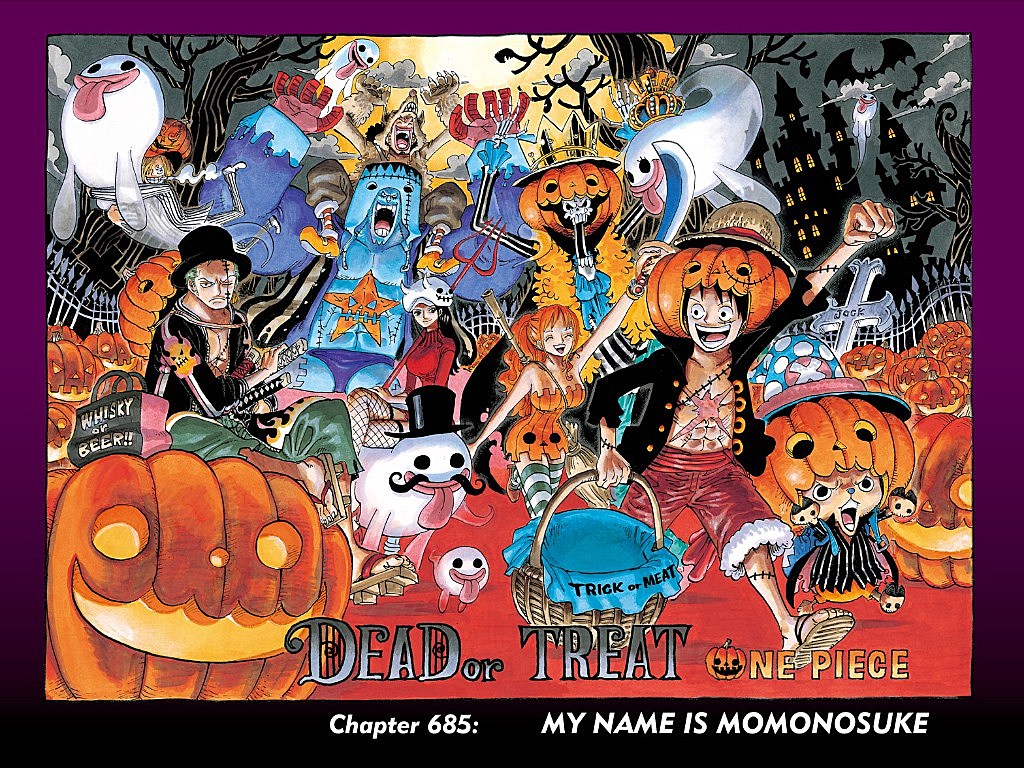 One Piece
One Piece
By Eiichiro Oda
Published by Viz Media
Available: One Piece store (print) / Weekly Shonen Jump Alpha (digital)
What do you say about a comic that comes out mostly weekly, features a sprawling cast of characters, is primarily concerned with the power of friendship, is more than 13,000 pages deep, and still manages to be incredibly endearing and consistently entertaining? How do you write a review of that?
Eiichiro Oda's One Piece is that comic. Every new installment -- whether you read the collected editions or the individual chapters in Weekly Shonen Jump Alpha -- is about as good as the volume that came before it. As a fan, it's remarkably pleasant to read. But as a guy who wants to write about One Piece and is in the horrible, awful situation of having to pick from between a dozen highlights in a really good comic series... it just makes life hard, you know?
I don't think I've ever been disappointed in One Piece, and I've read almost 690 chapters of it at this point. Even the less-good chapters, the ones that were too flashbacky or were about characters I didn't care about, were still pretty great when you compare them to basically every other comic ever. Oda's stories just work, and they work on both the dumb kiddie level of dirty jokes and puns and the adult level of genuinely believable and fascinating relationships. I can't get enough of One Piece. Having a comic that you know is always going to be good is a great thing. I can't even imagine how bad One Piece would have to get in order to let me down. But as long as it lasts, I'm psyched to read it.
MOST COSPLAYABLE NEW SUPERHERO
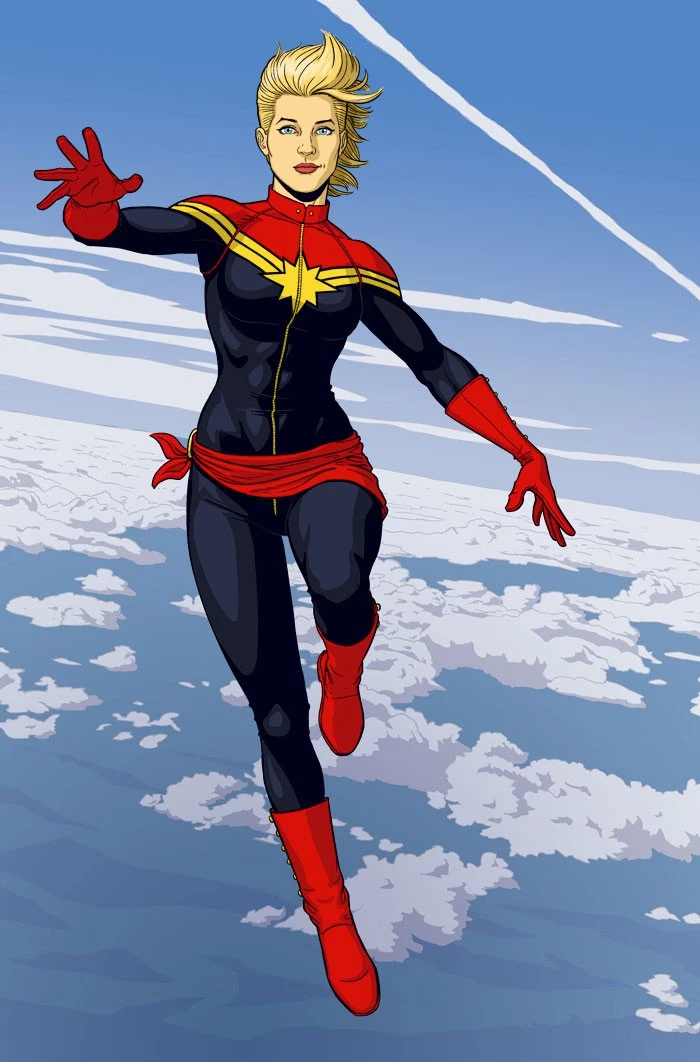 Captain Marvel
Captain Marvel
Designed by Jamie McKelvie
Written by Kelly Sue DeConnick, Christopher Sebela
Artwork by Dexter Soy, Emma Rios
Published by Marvel Comics
Available: Comics shops (print) / ComiXology (digital)
Carol Danvers isn't a new character. As Ms. Marvel, Binary, Warbird and a regular old Air Force Major, she's been kicking around the Marvel Universe for almost 45 years, a tenure that's seen her gain powers, lose powers, regain powers, serve as an Avenger, develop a drinking problem, briefly become Cosmically Aware™ while hanging out with the X-Men and some weird-ass space whales, have a space baby in one of those stories that We Just Don't Talk About, and be impersonated by a supervillain. She's pretty much done it all.
And yet, the relaunch this year that saw her upgraded to Captain Marvel feels as fresh and exciting as if she was created yesterday.
I'm not going to lie, a lot of that has to do with the new costume design from Jamie McKelvie. I've always liked Carol's various looks over the years (I even have a soft spot for that Warbird-era flak jacket/cargo pants look), but the one she's rocking now is easily one of the best suits in comics. It's a rare example of a high-collar costume that actually works, and while keeping the sash gives it an alluring bit of flair, the buttoned boots and gloves are... well, the only word for it is "classy." It's a great costume, which is probably why it's been the subject of so much fanart and cosplay that it threatened to unseat even Harley Quinn from her throne at conventions this year.
But as good as that costume is, it'd just be something nice to look at if it wasn't featured in a solid comic that stood as one of the most promising new series of the year. Launching a new woman-led series meant to appeal to new readers with an action-packed time travel epic that was also about personal heroes is a pretty bold move, but it paid off. It was thrilling, engaging, and Carol's complete disregard for the integrity of the timestream did an awful lot to crystalize her character. And, you know, it doesn't hurt that DeConnick and cowriter Christopher Sebela followed it up with a story where she hit a shark with another shark that she was swinging like a baseball bat. That's comics, y'all.
BEST COMIC BOOK ANTHOLOGY - ROCKETEER GROUP
 The Rocketeer Adventures 2
The Rocketeer Adventures 2
Based on characters created by Dave Stevens
Edited by Scott Dunbier
Published by IDW Publishing
Available: Comics shops (print) / ComiXology (digital)
Set before and during World War II, The Rocketeer stories star Cliff Secord, a young, handsome and broke pilot desperately in love with his model-actress girlfriend Betty. Jealous and insecure, Cliff nearly gets himself killed again and again trying to find some money with which he thinks he must prove that love. Discovering a lost experimental rocket pack that's both sought by some very dangerous people and inescapably fun only makes things worse for him (but better for us). Truthfully, despite its reputation as an adventure comic, occasions where The Rocketeer depicts a traditional good vs. evil action story are very rare, as most of the time Cliff is doing something incredibly foolish and getting rightly punched in the face for his trouble, with poor Betty caught in an endless loop of both worry and fury.
This endearing character dynamic combined with the aesthetically perfect period helped bring out the best in the late Dave Stevens' talents, and the same is true for the always impressive roster of comic book veterans that editor Scott Dunbier assembles in The Rocketeer Adventures. The anthology's second four-issue volume was released throughout 2012. Among those contributors: Kyle Baker, Bill Sienkiewicz, Stan Sakai, Arthur Adams, Paul Dini, Walt Simonson, John Paul Leon, J. Scott Campbell, Chris Sprouse, David Lapham, Matt Wagner, Eric Powell, Eric Canete, J. Bone, John Byrne and Darwyn Cooke, and many others besides.
Stevens' enduringly charming creation offers contributors a platter of heaven-sent beauties with which to work: the gorgeous pre-war period and associated Americana, the masterful Rocketeer character design, and the stunning Betty, modeled after pin-up legend and fashion icon Bettie Page. Every short story contained in this anthology expresses each creator's sincere fondness not just for Stevens' work, but for simply -- and it's so shocking to me that this is so rare in our mainstream -- having a total blast on the page, letting fly their talents for stylishly illustrated comic books full of humor, adventure and romance.
MOST MELANCHOLIC WELDING DRAMA
 The Underwater Welder
The Underwater Welder
By Jeff Lemire
Published by Top Shelf Productions
Available: Top Shelf store (print and digital) / Comics shops (print)
Written and illustrated by Essex County author Jeff Lemire, The Underwater Welder is one of the most haunting, arresting, and unforgettable books of the last year -- make that of the last ten years. An eery, bittersweet story of devotion and loss that seizes you like a lonesome apparition chasing down love, the book is not the work of a very good artist, it's the output of a confirmed savant.
The story is about Jack Joseph, a gaunt, sad-eyed, expectant father working as an underwater welder for an oil rig off the coast of a small Canadian sea town. Pressures mount as Jack's first child is about to be born, and the the young man puts a sad emotional and physical distance between himself and his wife. Literally throwing himself into his work, everything changes when Jack has a supernatural encounter at the bottom of the ocean.
Characters in The Underwater Welder are rendered in nervously thin lines that stand out starkly from an abyss of ink-washed blacks and grays. On land, Jack is harassed by columns of storm clouds; underwater, he navigates a dreamily shifting landscape of writhing obsidian masses, just on the edge of a prowling black abyss. The artwork places the reader in an area where the conscious and subconscious intersect with memory and possibility; a fermata in time and space where Jack must reconcile with expectation and responsibility, trauma and guilt. And we're right there with him, in that prolonged beat, that extended breath, until we drift slowly down for a joyous conclusion.
Not a book that can be skimmed or taken passively, The Underwater Welder is an otherworldly, beautiful, and heartwarming story that transports the reader to a place unlike any other. An emotional and moving work of graphic literature that compels the medium forward and the reader further down into the deep.
BEST NEW "PUBLISHER"
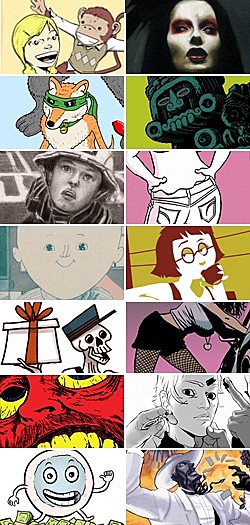 Kickstarter
Kickstarter
Founded by Perry Chen, Yancey Strickler, and Charles Adler
You're probably thinking this is hyperbole, but it's not. When sitting down to write about which publisher had the largest amount of quality material released this past year, my immediate instinct was to go with Image Comics for their wide range of new creator-owned material and promising future classics like Saga. Yet, when the site's editors suggested looking at Kickstarter, the crowd-funding platform developed to give independent artists a mechanism with which to finance and distribute their work with the help of their audience, I was amazed at how many books had been successfully funded. Elsewhere online, I had stated that Kickstarter might be reaching a high-water mark this year, but my prediction may turn out to be flat-out wrong if more and more creators turn to crowd-sourcing platforms and still find a community of people to support their efforts to work outside the traditional publisher system.
Instead of a drawn-out, high-level debate about whether or not Kickstarter is the best publisher of 2012, I'm simply going to list all of the successfully funded campaigns that were worth backing, and definitely worth reading now that they're complete:
- Alison And Her Rainy Day Robot by Fred Chao [link]
- The Alamo Chronicles by Travis Speegle III [link]
- The Astronomer by Matt Rebholz [link]
- The Bargin by K. Barrett and J.C. Grande [link]
- The Big Feminist BUT, edited by Shannon O'Leary and Joan Reilly [link]
- Carbon Grey by Hoang Nguyen, Khari Evans, Paul Gardner and Kinsun Loh [link]
- Decrypting Rita by Egypt Urnash [link]
- Dim Sum Warriors by Yen Yen Woo and Colin Goh [link]
- The Dylan Meconis Library by Dylan Meconis [link]
- Five Ghosts by Frank J. Barbiere and Chris Mooneyham [link]
- Godsend: Volume One by Jesse Bausch and Meg Gandy [link]
- Home of the Brave: Struggle and Triumph in a Broken America by Spencer Toyama and Jon [link]
- Life Begins At Incorporation by Matt Bors [link]
- LUST by Steve Niles, Ben Templesmith and Menton3 [link]
- The Merciful Vol. 1 by Adam Jack, Kyle McEwan and Dan Mackinnon [link]
- Next Town Over Volume 1: Maybe Next Time by Erin Mehlos [link]
- Pear Cider and Cigarrettes by Robert Valley [link]
- Plastic Farm: Seasons of Growth in the Fields of Despair by Rafer Roberts [link]
- Second Quest by David Hellman and Tevis Thompson [link]
- Sex and Violence by Jimmy Palmiotti, Justin Gray, Jimmy Broxton and Juan SantaCruz [link]
- The Smut Peddler, edited by Spike Trotman [link]
- SP7, edited by Ian Harker and Box Brown [link]
- Sullivan's Sluggers by Mark Andrew Smith and James Stokoe [link]
- TEDDY-1 by Joko Budiono [link]
- Telikos Protocol by Peter Cooper and Adam Burn [link]
- Terminally Illin' by Kaylin Marie and Jon Solo [link]
- Thrilling Adventure Hour: The Graphic Novel . . . And Beyond! by various [link]
- TOME, edited by Ben Templesmith, Menton3, Kasra Ghanbari and Nicholas Idell [link]
BEST TRANSCENDENTAL SYNTHESIS OF SHAKESPEARE, GRAFFITI AND NINJAS
 Prince of Cats
Prince of Cats
By Ronald Wimberly
Published by Vertigo
Available: Comics shops
In 2012 Ron Wimberly gave comics some ninjaupera galore in the form of his masterwork Prince of Cats from Vertigo. Wimberley's mix of fine art, graffiti/style wars, Shakespeare, New York in the '80s, high fashion, ninja comics and samurai films is dense and meticulous enough to make Alan Moore weep. This is The League of Extraordinary Gentlemen's cooler older brother. This is good soup. The magnitude of depth in this book only expands the longer you allow yourself to think about it. You can read it backwards, forwards and sideways and there's always something to see, something to "get." And yet with all of that, Prince of Cats is a very intimate personal work that only Wimberly could do. It is a story of the void that can grow in one's soul, and the ways that art and violence and expression attempt to fill that space frantically.
Wimberly's Tybolt is tortured by what he's not and by what he wants to become. He lives life in the spaces. He's Basquiat before the galleries. He's stalking greatness without mind. His story is at once a love letter to that version of New York and to Style Wars as well as a poetic meditation on youth and violence, art and expression, the meaning of fame, and restlessness itself. Prince of Cats is blood on the damn dance floor. It's Mercutio. It's Omar from The Wire. It's Petruchio, SAMO© and Kase 2. This book is absolutely haunted. It takes place in the '80s but feels like it's from the future. It plays with its own chronology like a DJ juggling beats. Prince of Cats rocks colors that no one else is even thinking about. Limbs and blood spray out in every direction while body shapes and silhouettes are framed in angles that call out how boring everything else has become by comparison.
That Prince of Cats is all of these things and also a cohesive and focused narrative is a feat unto itself and shows the clarity of vision that Wimberly had in approaching the work. There's a scene in a subway car that is as intense as anything else that came out in 2012. There wasn't much in 2012 that could match Prince of Cats on style, and even less on substance. This is comics for the godhood.
BEST BEVERAGE RECIPE
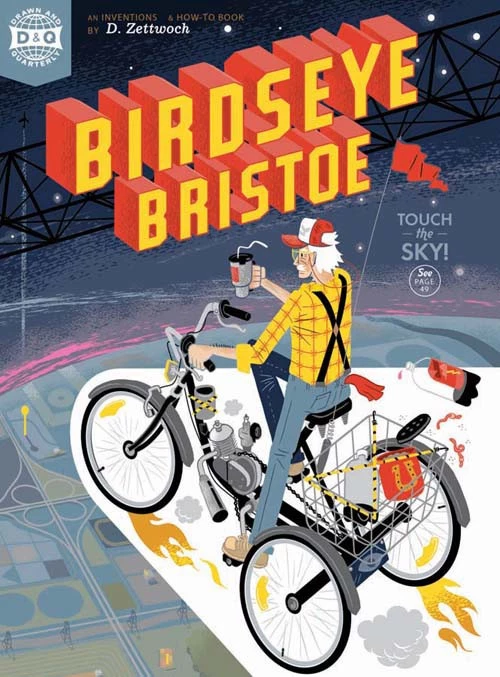 Birdseye Bristoe
Birdseye Bristoe
By Dan Zettwoch
Published by Drawn and Quarterly
Available: Comics shops, D&Q store
The Red Cow, also known as a Hot Blood Shake, is the creation of Birdseye Bristoe, the titular character of Dan Zettwoch's debut graphic novel which D+Q bills on the front cover as "An Inventions and How-To Book."
The story is that of a communications company building a Tower of Babel-sized cellphone antenna on land owned by Uncle Birdseye, whose niece and nephew are staying with him for the summer. The action is repeatedly broken up by lists, charts, maps, diagrams, drawings and interviews created or conducted by one of the two teens, generally presented as excerpts from their journals which they are almost always writing in.
One such page is devoted to the Red Cow, a three-or-four-ingredient, seven-step concoction served out of a large plastic cup and meant to be drunk without the aid of a spoon or straw (the goal is to give yourself a foamy pink moustache).
You'll have to read the comic to get the full recipe and the various tips Zettwoch includes, but the main ingredients are generic vanilla ice cream, more ice cream ("Maybe strawberry," the recipe suggests), room temperature Lucky's Red Thunder Red Crème Soda and a pinch of cayenne pepper ("to put hairs on your chest," although Uncle Birdseye's nephew Clint J. Murgatroyd takes his without the pepper).
It's but one of the many fun, educational pages in Zettwoch's extremely entertaining comic. Others include the many, many things one can build out of bungee cords and three-Liter soda bottles, a collection of various types of construction trucks, logos of mysterious origins, essays on a legendary giant pike and the virtues of geodesic domes, and an even easier recipe for red and green "Fingerwiches" (kinda like finger sandwiches, but with fewer syllables).
MOST TASTEFUL IMPLICATION OF INTER-SPECIES INTERCOURSE
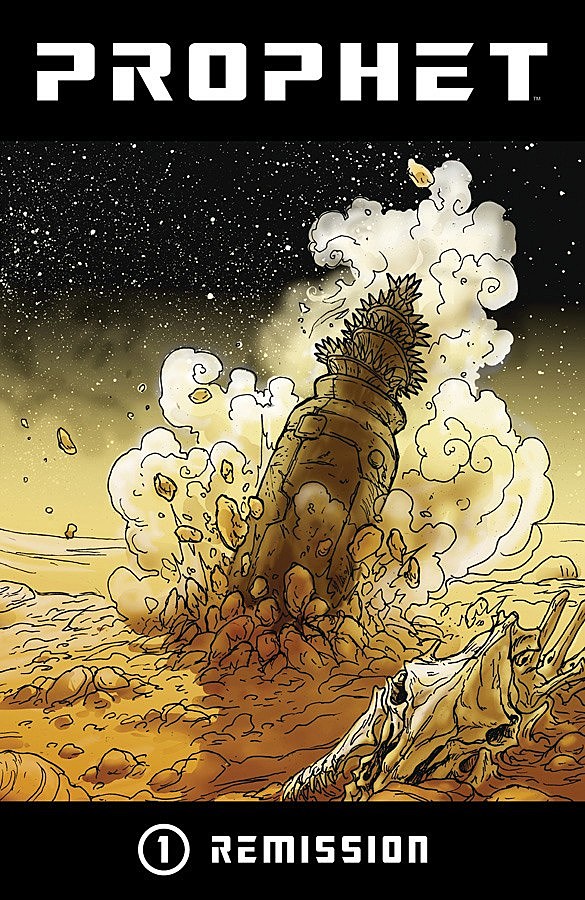 Prophet
Prophet
Written by Brandon Graham
Artwork by Simon Roy, Farel Dalrymple, Brandon Graham, Giannis Milonogiannis, Marian Churchland
Published by Image Comics
Available: Comics stores (print) / ComiXology (digital)
This brilliant sci-fi re-imagining of Rob Liefeld characters from the 1990s characters quickly established itself as a critical darling and can already be found on dozens of other best-of-the-year lists. With its seemingly endless collection of great ideas, stirring plot, and otherworldly art, Prophet would have made ours even without an implication of the cross-species boogie. But Brandon Graham and Simon Roy got down to it in their very first issue, in the bowels of a living jell city, with a recently-awakened John Prophet clone and, I swear to The Great Eye, a walking vagina. And it didn't stop there. Via the magic of flashbacks, we got a glimpse of the romance between Old Man Prophet and the reptilian Yilala. Now there may be something budding between an alien assassin named Rein-East and our old robotic buddy Diehard.
Without irony, Prophet is uncommonly imaginative, truly evocative, and beautifully immersive thanks to the work of a rotating cast of artistic geniuses, making it one of the most refreshing new mainstream comic books we've read in years. But still: bug sex.
BEST COMIC ABOUT HOW CRIME ACTUALLY DOES PAY BUT ONLY IF YOU'RE NICE ABOUT IT
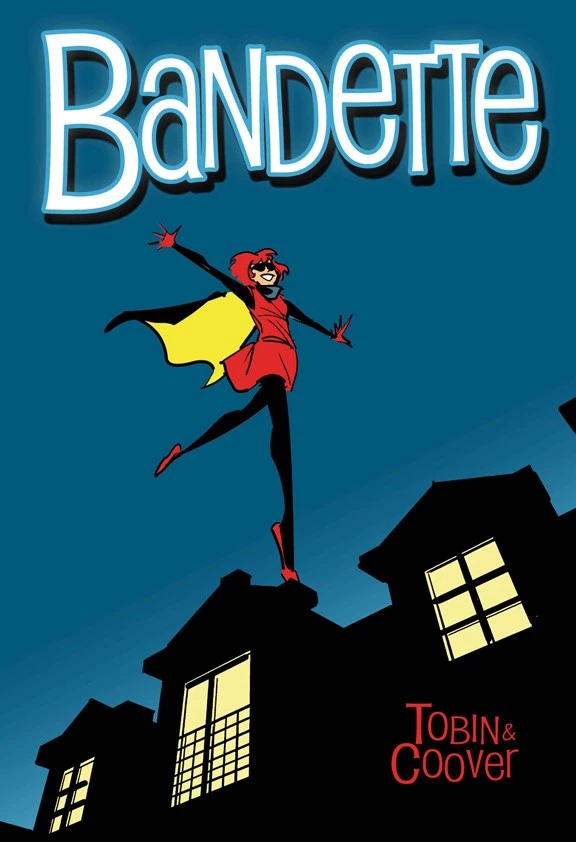 Bandette
Bandette
Written by Paul Tobin
Artwork by Colleen Coover
Published by MonkeyBrain Comics
Available: ComiXology
When MonkeyBrain Comics launched in July, they did it with some of the best comics of the year, digital or otherwise, and Bandette is far and away the best of that crop.
If you've been paying attention that probably doesn't come as much of a shock. Paul Tobin and Colleen Coover are up there with Batman and the concept of cosplay as things that define the words "ComicsAlliance Favorites," mostly because every comic they do has been absolutely fantastic. Their last two collaborations -- Gingerbread Girl, a psychological drama featuring a bird with a penchant for narration, and Banana Sunday, the all-ages story of the new girl in town and her talking monkeys -- were pretty darn great all on their own, but Bandette has taken things to a whole new level.
Modeled after European comics adventures like Tintin, Bandette follows a charming costumed thief and her Shadow-esque squad of "urchin" helpers. The story plays out with twists and turns that never stop being fun. It's the perfect showcase for Coover's art, too, with her clean linework and muted watercolor palette adding to the bain-dessiné feel of it. Her faces are expressive and her characters are beautifully designed, which just adds to how easy it is to fall in love with this story. And over the past three issues, that's exactly what I've done. As jaded as I might get after years and years of reading every comic I can, Bandette is one of the few that I can read every single time it comes out with a smile on my face the entire time. Of course, it doesn't hurt that it's only 99 cents for 15 dense pages, either.
MOST BLASPHEMOUS SCI-FI ACTION SERIES
 Punk Rock Jesus
Punk Rock Jesus
By Sean Murphy
Published by Vertigo
Available: Comics shops (print) / ComiXology (digital)
These days, it's customary to list creator credits right on the cover of these kinds of comics. But Punk Rock Jesus doesn't just list Sean Murphy as the writer and artist and genius mastermind superstar. It gives us his signature right beneath the word "Jesus." The bravado carries forth into each issue of this series, as Murphy puts pen and ink to work on his personal version of the second coming.
In Murphy's telling, Christ returns by way of corporate pandering and high-tech cloning and media oversaturation. And it's probably not Christ at all, nor even a clone of him, but it is, as the title promises, a "Punk Rock Jesus" in more than just metaphorical terms. We watch as young Chris grows like a lab rat by way of Truman Burbank under the corrupt eye of the J2 program, and the muscle-bound Thomas, a deeply conflicted former IRA member with the heart of Batman and the skills of every action hero Tom Cruise wishes he could be, keeps watch over the young savior-to-be.
Sean Murphy is an artist turning his attention to writing, but he doesn't skimp on the words or textual density of this comic. It's filled with satire and action and ideas and declarations about those ideas. It might be a bit too over-earnest, even with its defiant attitude, but Murphy makes up for every on-the-nose speech with a palpable sense that he's aiming for something ambitious. Punk Rock Jesus isn't one of those high-concept comics with a thin-but-easy-to-grasp-premise that lacks anything interesting beyond the opening issue. Murphy doesn't stop at the elevator pitch. He turns it into a saga, condensed into a handful of issues, with increasing escalation and warring factions.
Maybe this comic will make you think about the media or religion or the way we're manipulated by what we have been told. Or maybe it will just provide you with a thrilling diversion, etched in crisp black and white. You win either way.
BEST PUNS-BASED SCIENCE FICTION COMIC
 Multiple Warheads: Alphabet to Infinity
Multiple Warheads: Alphabet to Infinity
by Brandon Graham
Published by Image Comics
Available: Comics shops (print) / ComiXology (digital)
In an era of decompressed stories taking place between larger and larger ad spaces -- thereby causing many monthly comics to take less and less time to actually read -- something like Multiple Warheads is quite refreshing indeed. This is the rare monthly book that feels like a month's worth of book. The scale of the world building here is insane, and the puns per page rate of the first three issues alone has to be some kind of record. Brandon Graham has animated every inch of this world in a way that would make the Flintstones creators blush. Everything in Multiple Warheads has life and a story, even if you just catch a glimpse of it. There is a sense of things carrying on after you've gone that is amazing to behold.
Multiple Warheads: Alphabet to Infinity represents a huge level-up on Graham's work as an artist. There's a sophistication to the line work here that is hugely impressive, which is saying a lot considering the graphic splendor of King City and the first Multiple Warheads. No one creates space on the page with their paneling better than Brandon Graham. No one. The addition of color to Graham's work is a game changer as well. Graham's palette on this book would on its own be enough for it to warrant best of 2012 status. The mainstream scene is one in which gradients and Photoshop painting have kind of taken over, but Graham's flat colors shame them all. These are colors working in time with the line work to enhance the lines, not overtake them.
In a lot of road trip stories the vehicle takes on a life of its own. With Multiple Warheads this is ramped up to 11. The car is actually alive in this book, and is basically the third wheel on this otherwise romantic journey with organ smuggler Sexica and her werewolf boyfriend Nik. Obviously this is the best magical car road trip story since The Love Bug. It's in this strange way that Multiple Warheads finds the right balance between lighthearted humor and real human drama. These characters have an ethos and a reason to do the things that they do, and it gives the book its own kind of languid beauty as the story unfolds around them. A book like this is a challenge to the rest of the industry because so many of its strengths speak to the overall weaknesses in the scene as a whole. There are only a few comics that come out monthly that are worth eating ramen for a week to afford. This is one of them.
BEST COMIC WITH SUPERMAN IN IT
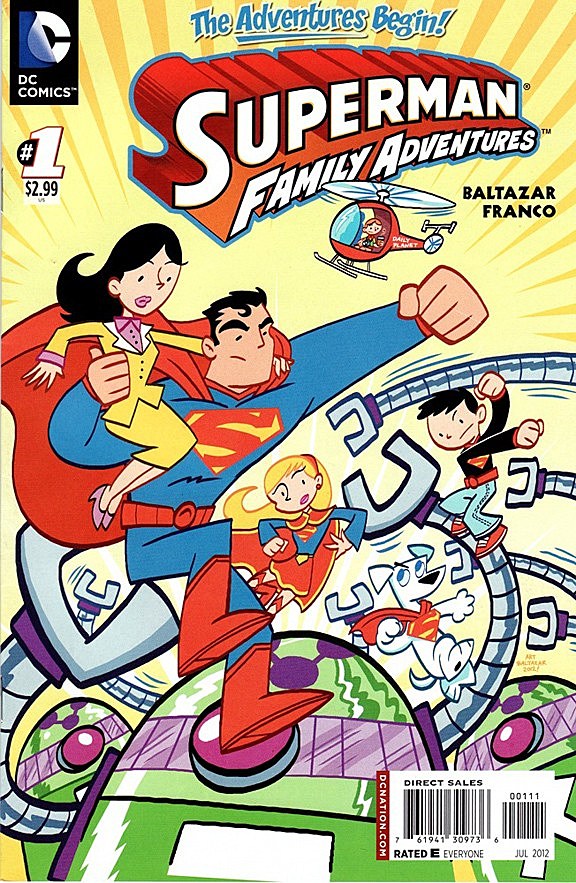 Superman Family Adventures
Superman Family Adventures
Written by Art Baltazar and Franco
Art by Baltazar
Published by DC Comics
Available: Comics shops (print) / DC Entertainment (digital)
Between two ongoing "New 52" monthlies and special projects like Superman: Earth One Vol. 2, Baltazar and Franco's follow-up to their kid-friendly gag comic Tiny Titans had some high profile competition for super-supremacy in 2012, but none that was able to capture some of the Man of Steel's best and most enduring qualities as simply, purely, effectively and regularly as Superman Family Adventures. The comic is a comedy, but one featuring a slightly more mature narrative structure than that of Tiny Titans, with issue-length stories and ongoing subplots and running gags that carry over from issue to issue. And as with Tiny Titans, this series is both a parody of superhero comics as well as a celebration of them.
This version of Superman is basically the Silver Age one, and that of the long-running George Reeves television show of the 1950s, complete with Jimmy Olsen and his signal watch, cantankerous Daily Planet editor Perry White, and the will they/won't they romantic triangle of Superman, Clark Kent and Lois Lane. However, the Superman/Lois relationship is given a bit of a twist with this comic, which is quite endearingly coy about whether Lois knows Clark's big secret or not (most hints point to yes, with Lois playing along to humor Superman). In addition to his co-workers, the "Family" includes Supergirl, all of the Super-Pets (even the pretty obscure Fuzzy, the Kryptonian Mouse), the modern clone version of Superboy and, most recently, Steel and his niece Natasha. The rogues gallery is well represented by Lex Luthor, Metallo, Parasite, Bizarro, Titano and The Toy Man (so far).
Perhaps the more "mature" Superman comic this "all ages" title bears the most resemblance to is Grant Morrison and Frank Quitely's celebrated All-Star Superman. Like All-Star, SFA manages to pluck the best versions of multiple aspects of the Superman mythos -- from all decades and all media -- and synthesize them into something that feels natural and organic rather than a Frankenstein's monster-like pastiche. It's a remix, albeit one with a sweeter melody and a greater, wider appeal -- more bubblegum pop than angsty rock and roll.
For some readers, the most obvious sign of Superman Family Adventures' superiority to the 2012's other super comics is this: Baltazar is so far the only artist who's been able to make the "New 52" brief-less, turtle-neck version of Superman's costume look good. By smoothing out all the unnecessary lines and giving it a flat, animated-style texture, Baltazar's "new (52) look Superman" looks like he's wearing a refined version of his old costume and not a silly suit of armor. It's just one more reason why this particular series isn't just super, it's the most super.
BEST COMICS EXPOSÉ OF LITTER GANGS
 Cody
Cody
by Michael DeForge
Self-published on the Web (link)
With somebody as prolific as Canadian indie cartoonist Michael DeForge, it's tough to pick a comic to point to as a good indicator of what he does best. This year has seen him publish the wonderfully bizarre Incinerator, another issue in his Lose series, weekly updates to his Ant Comic, various poster and cover illustrations, and a metric ton (because he's Canadian, get it?) of short stories to indie anthologies as well as his own website. Oh, and he also works designing props, characters and effects for the Adventure Time animated series when he's not doing all that other stuff. The guy has got hustle.
My favorite strip of his this year, however, was an improvised minicomic titled Cody. It's not tagged on his site, but a search will bring up the pages for you to read. And you're gonna want to read it because it is great. Cody starts off with the titular character running into a DeForge stand-in named "Michael," a former co-worker who is "an animator or illustrator (or something)." The two strike up a conversation that ends with Michael handing Cody a Chick-Tract-type pamphlet titled "CHOOSE LITTER," a recruitment tool for litter enthusiasts. It sets Cody down a path toward secret meetings in grocery store aisles, hand signals and tree nut allergies, all rendered in DeForge's grotesque yet cartoony style.
Reading Cody I was reminded of Thomas Pynchon's The Crying of Lot 49, a meandering story of a woman who uncovers an ancient secret postal system that operates in opposition to the federally-funded system. You read that right. There's also a David Foster Wallace essay where Wallace pinpoints what makes a David Lynch "Lynchian" -- "a particular kind of irony where the very macabre and the very mundane combine in such a way as to reveal the former's perpetual containment within the latter." Cody is, I would submit, a very "Lynchian" work in that it exposes a secret society that exists quietly all around you, whose existence can only be measured by looking at the bottoms of fences or in rain gutters or skidding across the road when the wind picks up.
MOST TRIUMPHANT RETURN
 Real and Vagabond
Real and Vagabond
By Takehiko Inoue
Published by Viz Media
Available: Viz store / Comics shops
You might not realize it, but Takehiko Inoue is one of the greatest comics artists going. He's got killer storytelling, a fantastic art style, a couple other nice art styles on top of that one, a couple hit mangas about basketball, and Vagabond, a fictionalized account of the life of Miyamoto Musashi.
Inoue put his career on hiatus in August, 2010. Those of us who were in the know immediately stripped off our clothes, draped ourselves in our mourning regalia, and set about wailing and lamenting our loss. The hiatus came because he'd gotten sick, but Inoue doubled down on that break later that year. He wasn't happy with the quality of work he was producing, so until he got back into fighting trim, he was placing his two ongoing series, Vagabond and Real, on hiatus.
Fair enough. I can't really blame someone for being dissatisfied with their work. At the same time, though, allow me to say that Real, Inoue's wheelchair basketball epic, and Vagabond never slipped an inch. And that's why we Inoue fans were so bummed by his departure and prayed it would be temporary. He didn't leave us hanging, exactly, but you don't really want great things in your life to leave, do you?
He's back now. He's been back for a while, but Viz, his US publisher, has only just begun shipping his latest collected editions. Real volume 11 is on store shelves now, and Vagabond volume 34 ships early next year. Vagabond Vizbig volume 11 -- a three-in-one collection in a larger deluxe format -- just recently came out, too. We're back in the zone, ladies and lads, and finally skies are blue again. Everyone calm down and exhale. The king is back, and his comics are as great as ever.
BEST COMIC BOOK FEATURING A BOOTLEG BATMAN
 The Furry Trap
The Furry Trap
By Josh Simmons
Published by Fantagraphics
Available: Fantagraphics store, comics shops
"Mark of the Bat" appears about a quarter of the way through The Furry Trap by Josh Simmons, and, like Simmons's other comics, it's an unsettling slice of graphic narrative. The faux-Batman comic, which details the Bat's horrifically misanthropic ways, might be a reason to check out the contents of this hardcover collection of Simmons stories, but the entire volume is full of troubling tales worth your attention.
You might flinch, as these are "Horror Stories" according to the back cover, but they don't follow the traditional genre rules.
Instead, Simmons unleashes one short comic story after another, most of them filled with perversions and all of them designed to exhibit different visual approaches. Every chapter in this book shows Simmons trying out another style -- it's a variety of color schemes and page layouts and narrative modes. Perhaps it might be appreciated as a good sampling of what comics can look like and how form can contribute to function in storytelling. But this is no fancy Chris Ware comic. This is Josh Simmons and deep discussions of art and storytelling seem pretentious when faced with his rape-minded savage elves, his gargantuan naked centaurs with flaming swords and laser eyes, and his hot-dog-eating, chain-smoking demonic babies.
The Furry Trap is the kind of book where any attempts at plot summary seems to totally miss
the point. These disturbing stories depend on the reader's experience of first encountering them. Simmons' artistry plays an important part - the visuals, no matter the mode, are consistently striking in their directness -– but it's the tone that creates the sense of weirdness and panic. Simmons's world is clearly drawn, but impossible to define by typical measures. The unexpected happens, consistently, and that's about the only thing you can be sure of.
In horror movies, there's sometimes a scene where a character, usually a child, turns toward the camera with a fearful look and the combination of vulnerability and terror is so potent that even the schlocky thrills of the rest of the scene can't peel your mind away from that one image. Josh Simmons's comics feel like that all the time. Vulnerability and terror. Housed in a pretty and grotesque and sexualized and shadowy and surreal package.
- Tim Callahan
MOST GORGEOUS TITLE PAGES
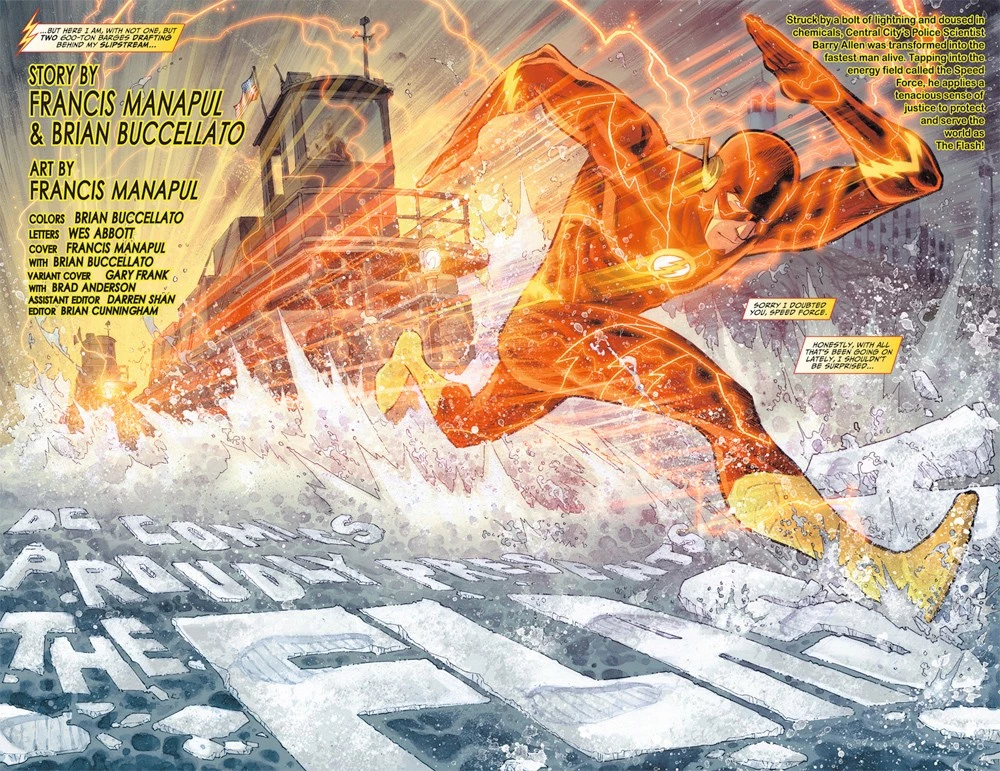 The Flash
The Flash
Story and art by Francis Manapul and Brian Buccallato
Lettering by Wes Abbot
Published by DC Comics
Available: Comics shops (print) / DC Entertainment (digital)
The art of the great title page is as lost as Milo & Otis. These days it's mostly just boring text placed somewhere in a gap somewhere within the artwork, in no way pleasing visually or thematically. A few good books go to the effort of having nicely designed separate pages just for titles and credits, and some books spread things out in a way that's graphically interesting and conveys a sense of wholeness, but most of these borrow method and pacing from movie titles. Very, very few books go to the effort to incorporate the title into the artwork itself even though it's trick that only comics can do, and despite the fact that tons of comics used to. The technique has fallen to the wayside but it's still practiced by rare books like Mud Man and Batwoman. But as great as Paul Grist and J.H. Williams are at this particular craft, they're absolutely getting lapped by The Flash.
Drawn by Francis Manapul with color by Brian Buccallato and complimentary letters by Wes Abbot, The Flash is demonstrating creative, kinetic, beautiful title pages that leap at you from the artwork. Every month, Manapul's exceptional sense of design, pacing, and intense visual imagination result in the some of the most satisfying title pages in mainstream funny books since the days of Will Eisner and Jim Steranko. It's the highlight of every issue of The Flash. Not the way Manapul and Buccallato have re-captured and modernized the spirit of the character, not the way they're re-spun the Rogues Gallery or the Speed Force into great new stories that pay homage to the Flash's history while moving everything forward. No, baby, it's that Day-in-the Life-like build-up of energy and discord that blazes by in a whoosh of red and ecstatically resolves into living words. "DC Comics Proudly Presents The Flash." Yeah, if I had title pages that looked like that, I'd be a bit more than "proud." They should change it to "Holy S*** Did You See What Just Happened: The Flash."
BEST BATS**T CRAZY SPACE OPERA THAT'S ALSO A QUITE TOUCHING FAMILY DRAMA
 Saga
Saga
Written by Brian K. Vaughan
Artwork by Fiona Staples
Published by Image Comics
Available: Comics shops (print), ComiXology (digital)
You don't title a comic book Saga unless you have some pretty big plans for it. And in its eight issues released in 2012, Vaughan and Staples have certainly woven a wide and complex tapestry with their story of what seems to be a never-ending and planet-spanning war between two societies, intergalactic bounty hunters, TV-headed nymphomaniacal nobility, and giant spiders with boobs. In fact, I'll be honest: There are so many moving parts that I occasionally had trouble keeping tabs on the various Saga subplots month to month. I found myself going back and rereading more or less the entire series each month to remember what The Will was all about or remind myself which TV-headed royal was which. Fortunately, Saga isn't just a series that calls for multiple readings because of various threads, it also warrants them. And what most justifies paging back through each issue isn't the bigness of its universe; it's the intimacy of its core story.
The boundary-crossing romance that anchors Saga seems shockingly simple for such an ambitious comic. A woman with bat wings and a guy with ram horns find themselves locked in a forbidden love, Romeo and Juliet-style. But Romeo and Juliet never conceived a baby that is clearly a Very Special Child. The book's first arc establishes that Alana and Marko are in love and on the run from both their home societies; the second is about Alana meeting Marko's parents.
Like all good science fiction or epic fantasy, Saga has grand aspirations but introduces the audience to the world through a handle they can hold onto: human (or at least human-like) characters experiencing family drama. After all, Star Wars was ultimately about a brother and sister encountering their long-lost dad. Even with all the big ideas of tree spaceships and ghost babysitters, Saga is ultimately about how much two parents love their kid and how much they want to protect it. As a gateway to a universe of inspired otherworldliness, it's securely grounded.
BEST COMIC THAT WON ALL THOSE AWARDS
 Jim Henson's Tale of Sand
Jim Henson's Tale of Sand
Screenplay by Jim Henson and Jerry Juhl
Adapted by Ramón K. Pérez
Published by Archaia
Available: Comics shops
If people didn't expect exactly great things from the lost, unproduced screenplay for an experimental, abstract, acid trip of a feature film called Tale of Sand, written by the great Muppet Show creators Jim Henson and Jerry Juhl, they certainly expected something interesting. Little did anyone suspect that what on paper seemed very pretty but perhaps a little, well, artsy fartsy, would launch into the mainstream one of comics' most captivating new artists and become what's very arguably the most gorgeously illustrated graphic novel of the year when it was first released in the very final days of 2011 (which precluded its recognition on basically every list such as this last year).
Ramón K. Pérez used the surreal setting imagined by the late Henson and Juhl -- who wrote Tale of Sand at the end of a period of very innovative and groundbreaking work the 1960s -- to immerse readers in a meticulously drafted universe of haunting old west mesas, small town sock-hops, paranoid nightmares, bikini girls of doom, atomic horror, and jazz-fueled odysseys across dreamlike dance floors. And while it's easy enough to simply throw all those things at the page and call it all it a day's abstract work, Pérez demonstrated truly uncommon skill with comics storytelling, designing pages that lead the reader's eye on a journey almost as exciting as that of Tale of Sand's intrepid hero, Mac, as he runs for his life to the finish line.
Pérez followed Tale of Sand with under-promoted but similarly excellent work on Marvel's sci-fi adventure miniseries John Carter: Gods of Mars, and is now the permanent co-artist of that publisher's very popular superhero series, Wolverine and the X-Men. I'm glad bigger and bigger audiences will be seeing Pérez's fine work as his career continues to ascend, and as an art fan I'm eager to see him try to leap the incredibly high bar he set for himself with Tale of Sand, which deservingly won the 2012 Eisner awards for Best Graphic Album-New, Best Publication Design and Best Penciller/Inker.
BEST VARIANT COVER ARTIST
 The Internet
The Internet
For Adventure Time, Marceline and the Scream Queens and Bravest Warriors
Published by Boom! Studios
Available: Comics shops (print) / ComiXology (digital)
Boom! Studios is known for its pretty robust alternate/variant cover strategy, but the publisher Kaboom!-ed to new heights in 2012 across its Adventure Time, Marceline and The Scream Queens and Bravest Warriors books. We're not complaining -- far from it -- because rather than tap the same half-dozen or so superhero cover artists you see almost everywhere else, Boom! followed Frederator's lead and recruited tons of talent from the wider world of webcomics, animation and social media to deliver four-to-six awesome pieces of art to gawk at every single month. They've done so many, in fact, that an Adventure Time Cover Showcase collecting scads of art was released to answer fan and art lover demand.
Joining interior creators known for their own indie projects such as Ryan North (Dinosaur Comics), Meredith Gran (Octopus Pie) and Joey Comeau (A Softer World) for covers have been everyone from AT creator Pen Ward to James Kochalka to Ming Doyle. In 2012 alone, the following artists illustrated a cover for at least one of these comics, with many working on several:
Shelli Paroline & Braden Lamb, Chris Houghton, Jeffery Brown, Chris Samnee, Sanford Green, Pendleton Ward, Jon Bennett, Emily Carroll, Becky Dreistadt & Frank Gibson, Elena Barbarick, Michael DeForge, Stephanie Buscema, Kassandra Heller, Scott C., Bettie Ward, Paul Pope, James Lloyd, Dan Hipp, Steve Wolfhard, Mike Krahulik, Eleanor Davis, James Kochalka, Jason Ho, Graham Annable, Franco Aureliani, Drew Weing, Colleen Coover, Phil McAndrew, Shannon Wheeler, Joe Quinones, Jon Vermilyea, Tyson Hesse, Victoria Maderna, Nick Edwards, Kevin Wada, Logan Faerber, JJ Harrison, Rich Kolowski, JAB, Lisa Moore, Brianne Drouhard, Camilla D'Errico, Rich Tommaso, Lucy Knisley, Steve Wands, Chynna Clugston, Andy Hirsch, Kate Leth, James Hindle, Zack Sterling, Tally Nourigat, Faith Erin Hicks, Yuko Ota, Vera Brosgol, Erica Henderson, Jen Wang, Malachi Ward, Jon Boam, Aaron Renier, John Martz, Jim Rugg and Maris Wicks.
This huge list of talent reads like our art-stuffed Tumblr feeds, and that's just fine with us. Keep it coming in 2013, Boom!.
BEST ARCHIVAL COLLECTION OF AMAZING BUT OCCASIONALLY RACIST MATERIAL FROM THE 1930S
 Walt Disney's Mickey Mouse: House of the Seven Haunts!
Walt Disney's Mickey Mouse: House of the Seven Haunts!
By Floyd Gottfredson
Published by Fantagraphics
Availability: Fantagraphics store / Comics shops
Over the past year, Fantagraphics' reprints of Floyd Gottfredson's Mickey Mouse strips have been some of my favorite things to read. They're one of the few things that I get excited about to the point of giddiness, and House of the Seven Haunts! was the best volume yet. Virtually everything about Gottfredson's craft in these strips is mind-blowing, especially when you consider that they were written and drawn in 1936. The comedy, the adventure, the pacing that saw these four daily panels building into sprawling, months-long epics that were built around exotic adventures and thrilling set pieces.
It's the variety that really puts this one over the top. The title story finds Mickey, Goofy and Donald team up as ghostbusters to exorcise a house that's been taken over by alarmingly rude ghosts and then takes slapstick Scoobydoovian twist, but there are also stories of Mickey going undercover for the G-Men and joining up with the Foreign Legion, a pulpy sci-fi serial about a scientist who discovers a terrifying atomic power, and a twist on the Prince and the Pauper where Mickey's brought in to fix his royal double's tax structure before the peasantry starts revolting. It's one wild adventure after another, and they're all done with an incredible skill that still holds up almost 80 years later.
But there's a catch.
Like a lot of comics from the time, Gottfredson's strips occasionally rely on offensive racial caricatures for gags, and they're always bad enough to wrench you right out of the story. Mixed up in those classic tales mentioned above is a story called "In Search of Jungle Treasure," and as you might imagine, that thing is about as rough as they come, full of the kind of uncomfortable stuff that'll lead you to just start turning pages until it's all over. But to their credit, Fantagraphics and editor David Gerstein -- who discussed the problematic stories in an interview here at CA -- never shy away from addressing these segments in the lengthy text pieces that supplement each comic, with explanations of why they opted not to edit the original strips. The end result is a book that owns up to the truly awful mistakes of the past, and ends up being one of those rare comics that shows you everything comics can do, and a bunch of stuff they definitely shouldn't.
CRUELEST CANCELATION
 Takama-ga-hara
Takama-ga-hara
By Jyuuzou Kawai
Published by Viz Media
Available: Weekly Shonen Jump Alpha (digital)
Sometimes you read a comic and it just clicks. It doesn't have to be a great work or some heartbreaking work of staggering genius. Sometimes it's just a simple idea that is executed well. It's the kind of comic that you want your friends to check out, just because it's such a nice read. And then, because no one gets to have anything nice ever, that comic gets cancelled.
May I introduce you to Jyuuzou Kawai's Takama-ga-hara? A series that lasted a mere 17 chapters before being canceled, but not before it grabbed my attention. It started out slow and sort of weird. Yamato Yamada is from a family of fitness nuts, wrestlers, and brawlers. Rather than being interested in getting swole, however, Yamato just wants to draw manga for a living. So of course he discovers that he has tremendous special powers, gets sucked into another dimension, and basically turns into the most-shonen of shonen comics heroes.
Takama-ga-hara is a self-aware work. That's obvious from the point that someone reads a manga that's so terrible that they almost die. So as Kawai stacks shonen trope on shonen trope, the question isn't, "What's the point?" It's, "How is this going to be upended?"
The comic takes everything that makes the shonen category such goofy fun and turbocharges it. If you're into stories about boys walking the path of undeniable justice and undying friendship, you need to check out Takama-ga-hara. If you like shonen comics like Akira Toriyama's Dragon Ball or Eiichiro Oda's One Piece, but wish that they had more fun with the tropes of the genre, then you seriously need to check out Takama-ga-hara.
BEST POSTHUMOUS HARVEY PEKAR COMIC
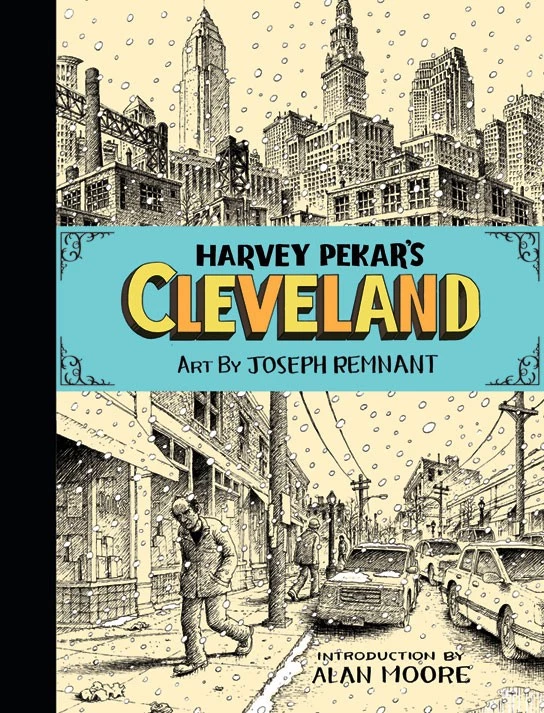 Cleveland
Cleveland
Written by Harvey Pekar
Artwork by Joseph Remnant
Published by Top Shelf Productions
Available: Top Shelf store (print and digital) / Comics shops (print)
Harvey Pekar may have passed away in 2010, but due to how prolific a writer he was and how long it can take an artist to draw an entire graphic novel, two books he wrote were only published for the first time this year. Both were fine works from a fine writer working with talented collaborators, but one was more dominant than the other. Pekar's Not The Israel My Parents Promised Me, drawn by Megillat Esther artist JT Waldman, is a memoir of Perkar's ever evolving feelings on the politics of Israel, from those of a young Jewish boy in a Jewish home in a Jewish part of Cleveland to those of an older man who watched a half-century and change of Israel's history from afar.
For a framing device, this book depicted Waldman and Pekar talking about the book they were making together, hanging out in some of Pekar's favorite places in Cleveland. You see, I can't even mention Pekar's book about Israel without mentioning Cleveland repeatedly, which just goes to show how important that city was to the legendary writer, who had over the years become something of a spokesman and good will ambassador for his hometown (or maybe just ambassador, since not all of the will was good).
That one of his last published books was entitled Cleveland and was about the city itself as much as it was about Pekar was beyond fitting. Working with artist Joseph Remnant, whose particular style was reminiscent of the work of several of Pekar's favorite and best-known collaborators over the decades, the book intertwined the city's history with Pekar's endlessly fascinating biography, blending the two until the story of one became the story of the other. As such, Cleveland embodied what was so special about Pekar as a writer and as a comic book character. He was the ultimate everyman hero, heroic in his insistence that the everyman character is a hero, the seemingly insignificant aspects of such a character's life as worth as chronicling in comics form as those of supermen or cowboys or romances or illustrated classics.
Cleveland is to Harvey Pekar as Gotham City is to Batman or Metropolis is to Superman, but Cleveland's story is a more dynamic, more vital, more relevant one, for the same ways Pekar is a more present hero: Cleveland is a real place, just like Harvey Pekar was a real person, and one whose intensely personal work -- hugely informed by the city he called home -- will captivate us always.
BEST ABSOLUTELY CRAZY COSMIC FIGHT COMIC TO HEAVILY REFERENCE THE TRANSFORMERS: THE MOVIE (1986)
 Sharknife: Double Z
Sharknife: Double Z
By Corey Lewis
Published by Oni Press
Available: Oni store (print) / Comics shops (print) / ComiXology (digital)
The story of busboy Ceasar Hallelujah -- who transforms into the cosmic warrior Sharknife by eating a magical fortune cookie -- and his mission to protect the restaurant Guandong Factory (famous for dumplings) from all enemies -- including Ombra Revenga, wielder of the Orcasword -- Sharknife got its second volume this year, and kind of without much fanfare, curiously. You'd expect a bigger reaction for a work that is so bursting at the seams with raw comics energy. A significant level-up on the first volume, Sharknife: Double Z can barely contain itself with layouts and compositions that make the video game eye candy of something as kinetic as Marvel vs. Capcom look stately and reserved. Lines full of electricity crackling across the page characterize the majority of this book, which is very difficult not to get caught up in. It is almost a breathless read in terms of the sheer velocity of its architecture.
While Sharknife: Double Z has style for miles and miles, the story remains coherent and enjoyable. It's a -- and it's strange to say this -- down-to-earth interpretation of the Shonen Dragonball Z/Naruto style of adventure story mixed with the best bits of Capcom 2D fighting games. It is both a familiar brew and a strange one at the same time. Reading Double Z, you can see things you remember or enjoyed from other places, yet the context is alien and the style is extradimensional. Taking its cue from Lewis' hyperactive artwork, the narrative bolts around chronologically with its own strange energy, building a deeper Sharknife mythos that is was already pretty impressive.
This book was live wire comics for 2012. There was no experience reading a comic this year that was anything like Sharknife: Double Z. Let's start a cult following.
MOST PRESIDENTIAL COMIC
 Barack Hussein Obama
Barack Hussein Obama
By Steven Weissman
Published by Fantagraphics
Available: Fantagraphics store / Comics shops
It might be easier to describe this comic by talking about what it isn't. Steven Weissman's Barack Hussein Obama is not a Bluewater-style biography of the current president of the United States. It's not any sort of political treatise. In fact, it's not anything close to an accurate portrayal of political life in the 21st century in any way, shape or form.
So, if it's not any of those things, what is it, then? Well, that's when things get complicated. Barack Hussein Obama is a collection of goofy, meandering, almost improvisational one-page strips that show a Bizarro President Obama as a regular guy with irregular, often existential problems. There's something vaguely Peanuts-esque at work here, with a cast of recognizable characters (Joe Biden's here; a monstrous, veiny Secretary Clinton is here; and the breakout characters of 2012, the fictional versions of the Obama daughters, Sasha and Malia, are here), all with their own quirks and personalities, all delivering punchlines while the specter of death and soul-crushing doubt hangs over their heads. It's funny, but like any good comedy, it's tied up in uncomfortable and relatable truths.
Presented with rough, highly stylized pen strokes, white out, and zip-a-tone on cream-colored Moleskine notebook pages, Barack Hussein Obama starts off gentle, but as it progresses, starts to lean into its punches, with the titular character beginning to strain under that weight. At one point, Obama turns into a giant parakeet and flies to a deserted island with his daughters before then turning into an egg that simply sits there, waiting. It's funny but also unsettling, which is sort of Barack Hussein Obama in a nutshell. It's surreal, nonsensical, and a little depressing -- so, huh, maybe it's an accurate portrayal of political life in the 21st century after all.
BEST STRAIGHT UP SLAP IN THE GOD DAMN FACE
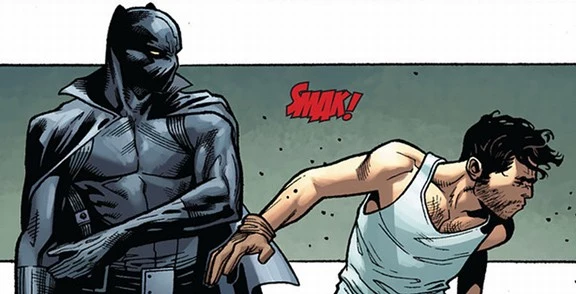 Avengers Vs. X-Men #7
Avengers Vs. X-Men #7
Story by Jason Aaron, Brian Michael Bendis, Ed Brubaker, Jonathan Hickman and Matt Fraction
Script by Matt Fraction
Artwork by Olivier Coipel, Mark Morales and Laura Martin
Published by Marvel Comics
Available: Comics shops (print) / ComiXology (digital)
Marvel editor-in-chief Axel Alonso described the Avengers Vs X-Men series as the publisher's equivalent to a summer blockbuster. So think of it like a Michael Bay movie, or a Paul W.S. Anderson movie, or Battleship. You'll find it quite an easy comparison to draw.
Regular readers will know that ComicsAlliance paid quite close attention to AvX this summer. In our considered and scholarly opinion the event found Marvel at a crossroads. Would it keep pushing for the pomposity of its Civil War world, investing its superheroes with po-faced seriousness by squeezing them into the uncomfortable shoes of sophomoric political posturing? Or would it celebrate the fantastical grandeur and visual vibrancy of the genre with stories that explored the big, bold, new ideas that make superheroes great?
AvX felt like an attempt to wrestle with that choice. On the one hand it gave us a rehash of Civil War with the tub-thumping, bloviating roles of Cap and Iron Man now played by Cyclops and Cap; on the other it gave us the gloriously flashy theater of cosmically-enhanced mutants reshaping the world in their image, in their underpants.
In the seventh issue of AvX, Iron Man plotted to take down the Phoenix Force by sacrificing his own life. And Black Panther just straight up slapped the martyr complex out of him, and told him to apply a little magical thinking to his superscience. Given the choice between maudlin self-indulgence that I can find anywhere, and majestic wizz-boom crazy that I only seem to consistently find in superhero comics, I know which one I'd like to see more of.
So I encourage you to applaud the act of the bold slapping the boring out of superheroes. Because Black Panther hitting Iron Man is the sound of one hand clapping.
SPECIAL AWARD FOR VALOR IN COMICS FANDOM
 Tumblr
Tumblr
Curated by countless fans and comic book professionals
Good place to start: The #comics tag, which links to some of Tumblr's most active comics blogs
By this point the role of Tumblr in comics is almost without question. If we didn't know better we'd say Tumblr was a blogging platform built specifically for the speedy display and dissemination of comic art. It is completely fascinating, the way that a narrative voice begins to make itself heard simply through the act of scrolling through a Tumblr of carefully curated images from somewhere else. The sensation is almost sinister in its accumulation. The impact of the experience is that it allows you to to think about Tumblr itself as a comic.
If comics are sequential images formed into a narrative, then someone's personal Tumblr blog becomes a personal comic. But what is interesting is that if you are following someone on Tumblr and reading them via your dashboard -- where all the disparate blogs you follow are presented as a stream of images, videos, text and other content -- the "comic" reads out of order and with interruptions. Whereas if you navigate to the Tumblr page directly, what you see is uninterrupted but typically in chronologically reversed order. Think of it as progress to an indeterminate end versus the moving away from a more and more distant beginning. What's more, many Tumblr themes necessarily warp images to pre-programmed parameters. They become changed and new both in context and in construction.
Tumblr is all utterly fascinating to digest on a number of levels, not the least of which is because it's simply pretty to look at, but more importantly, because increasing numbers of comics readers are reacting not by leaving comments on blogs like this one but actually creating work of their own. Whether in the form of fanart, mashups, redesigns, remixes, cosplay, those silly rage comics or even wholly original material from talented people who may not even aspire to be professionals, this is just how they respond to art naturally.
In this special way I think Tumblr reflects where comics are now, which is a testament to the adaptability of the medium. The arcane practices of the direct market can't kill this thing that evolves and applies itself in all kinds of weird ways upon our lives. As it becomes more and more a natural part of how the Internet expresses itself, comics becomes a medium through which more and more people see the world differently. The images of these books and characters have taken on lives of their own. Comics culture is now happening online at light speed in the simple transaction and reorientation of these images and concepts through our own personal prisms on Tumblr, Twitter and whatever's next. In turn, I think this process is resulting in the kind of work we are seeing people do on the page, and I suspect we'll see some hard evidence of this on next year's list.
BEST NOT-ACTUALLY-A-COMIC-BOOK
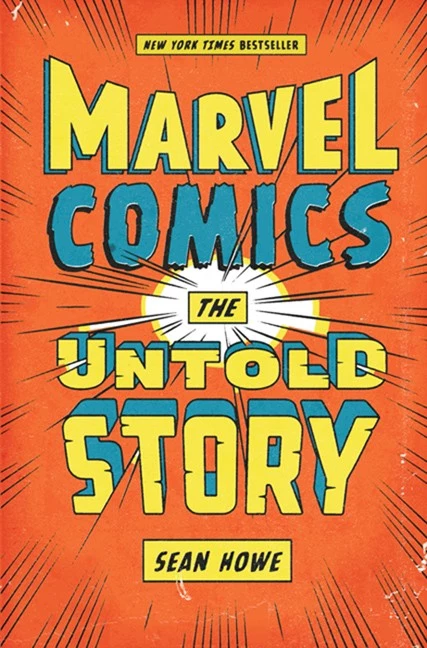 Marvel Comics: The Untold Story
Marvel Comics: The Untold Story
By Sean Howe
Published by HarperCollins
Available: Bookstores
In a year when Marvel Comics characters made literally a billion dollars at the box office, it's important to remember that those characters all came from a handful of human beings -- with all their attendant prejudices, personalities and quirks -- working furiously against deadlines, office politics and often their own devices to create a fictional reality for others to inhabit; for a price, of course. Sean Howe's Marvel Comics: The Untold Story is a deep look at these human beings and the multi-billion dollar universe they helped to create.
The book is a crackling, energetic read, with well-researched stories featuring all the players you'd expect: Stan Lee and Steve Ditko's legendary run on Amazing Spider-Man; Lee and Jack Kirby's Fantastic Four; Steve Gerber's Howard the Duck and Man-Thing comics; the '70s work of Steve Englehart, Marv Wolfman, Jim Starlin, Len Wein, Don MacGregor and Doug Moench; Chris Claremont and John Byrne's Uncanny X-Men and Claremont's subsequent X-Men sub-universe; and of course the eventual founders of Image Comics as their stars were on the rise at Marvel. The history of Marvel's various corporate owners is given a hard look as well, with the Cadence/New World years generating some frankly insane turns that nearly destroyed the company. You also get to know the editors, production staff and Bullpen personalities like Morrie Kuramoto, John Verpoorten, Danny Crespi and Marie Severin.
Above all else, you're made acutely aware that Marvel staffers and freelancers are real live people who worked (and work) tirelessly to make sure that these four-colored epics hit the stands every week, and it's sobering and often heartbreaking to see some of these people get run over as their company pushed (and pushes) toward bigger profits. I mean, this book made me feel sorry for the notoriously domineering former Marvel Editor-In-Chief, Jim Shooter. Jim Shooter, you guys!
Marvel Comics: The Untold Story is not a perfect book; you can tell Howe's just not all that interested in the narrative once Jim Shooter leaves the company, and with the comics of the late '80s and early '90s being more about the personalities and the covers they drew than the actual comics within, well, you can hardly blame him. But the massive amounts of good in this book far outweigh the bad, leaving you with a read that's packed to bursting with amazing stories behind the amazing people that built an empire.
MOST EFFECTIVE VALIANT RELAUNCH (THIS DECADE)
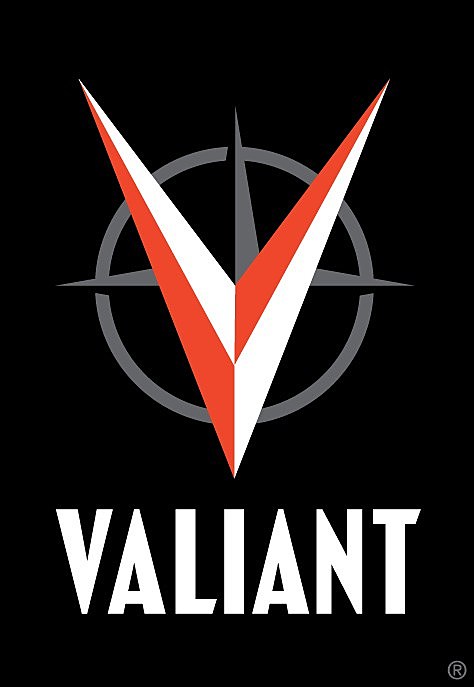 Valiant Comics
Valiant Comics
Executive Editor, Warren Simons
We've seen a lot of relaunches lately, from single characters to larger publishing lines to entire companies. Relaunches aren't created equal, either. Some relaunches go big and revamp dozens of things simultaneously. Others play it safe and just switch things up here and there. Sometimes relaunches fall flat, sometimes they're amazing, and sometimes they're just... okay. Valiant Comics relaunched this year, and I think that they've produced one of the most effective relaunches in recent memory.
Valiant's relaunch is conservative in some ways and aggressive in others. Instead of launching with an entire universe being carefully mapped out and spread across several titles, Valiant kept it simple. They launched with a single title, X-O Manowar, in May, added Harbinger in June, Bloodshot in July, and Archer & Armstrong in August. A fifth title, Shadowman, launched in November. This slow roll-out made it made it easy to give one of Valiant's books a try on a whim. You weren't overloaded with new books, and staffing those comics with pros like Robert Venditti, Cary Nord, Joshua Dysart, Khari Evans, Duane Swierczynski, Fred Van Lente, Justin Jordan and artist Patrick Zircher didn't hurt.
The aggressiveness comes in when you consider how Valiant's new line is interconnected. They all take place in the same universe. A rookie mistake would be to produce a reading order and base your entire universe around the fact that it's a connected universe. Valiant, though, keeps it simple. The books clearly take place in the same world and share certain elements, but feature a variety of tones, approaches, and styles. They're all adventure comics, but they're all different takes on the genre. Some are funny, some are deadly serious.
The universe is there, but it's yours to discover. It feels more organic, more natural, to leave it to the reader to connect the dots early on. It lets the reader opt-in to the universe at large, rather than opting out. Not all of the books will be to your taste, but Valiant has a strong shot of having something in its library that you'll dig.
More From ComicsAlliance




